-
Posts
2.332 -
Joined
-
Last visited
-
Days Won
60
Posts posted by Sundiata
-
-
3 hours ago, Stan` said:
Also the scales are not in the right direction but that seems so be the case in your reference so meh
I noticed that too, but then I realized it actually makes sense. Since people are much smaller than elephants, when they attack it with spears and swords they'd be stabbing upwards. If the scales are orientated downwards, the blades can dig underneath the layers of scale, especially when the scales are so big.. That having said, I haven't personally seen the original sources for these types of scale armor, but they're apparently described or depicted somewhere.
From "Animals in the Military: From Hannibal's Elephants to the Dolphins of the US Navy", by John Kistler also repeated in his other book "War Elephants", he says:
Apparently Seleucids were also also forced to switch to the smaller North African elephants in later years, just like the Ptolemies (Greco-Bactrian Kingdom, Indo-Greek Kingdom and Iranian Parthians would have blocked their access to Indian elephants). Perhaps it would be an interesting option for Ptolemies and Seleucids to be forced to choose from either stronger but more expensive Indian elephants vs cheaper but weaker African elephants?
2 more pretty art refs:
"A turreted war elephant wearing a saddle cloth decorated with a hippocampus (Eastern Iran, ca. 3rd-2nd cent. BCE"
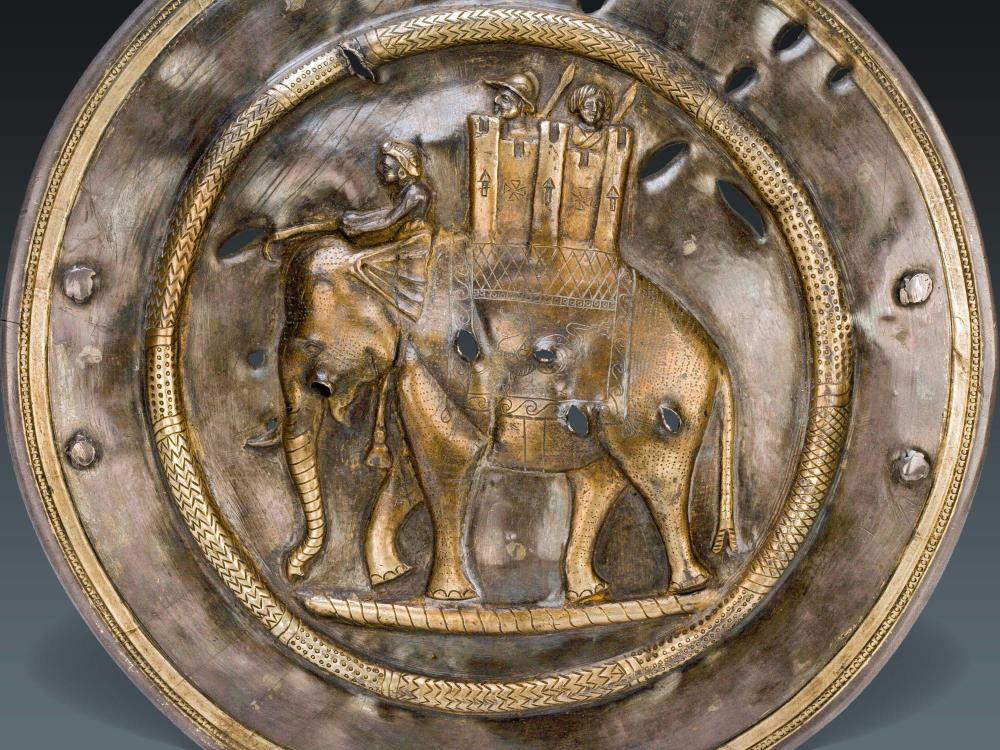
-
 3
3
-
-
Just now, Alexandermb said:
Sorry i bother you
Dude, no way you could bother me.
Just now, Alexandermb said: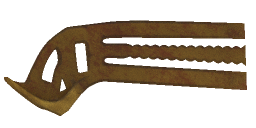
But, I'm not sure what I'm looking at here?
-
 1
1
-
-
Just now, Stan` said:
Oh, dear, have I been committing art assets in my sleep again? (I think that was a wrong tag
 )
)
-
On 8/25/2019 at 1:43 AM, Alexandermb said:
512x128
Something like these?
Spoiler


Different? Do you want different colors?
-
 1
1
-
 1
1
-
-
I would love this...
-
 1
1
-
 1
1
-
-
@Alexandermb Have you tried using an HDRI to bake in some fake but realistic reflections from the sky and such? I think Enrique suggested something similar recently. It would add to the realism of the helmets, which currently look a little as if they were lit under a spot, reflecting whites but no blues from the sky. (I know lighting is probably one of the most difficult things and an HDRI might be a bit hard on your system).
Here's a beautiful example of how outside lighting reflects the sky in the polished metal
As LordGood said, I think adding dirt and scratches afterwards with the spec map offers the cleanest approach, perhaps even using normals for heavier denting?
Of course I'm not an expert in the matter. I just see you're still experimenting a lot so I thought I'd my 2 cents.
-
 1
1
-
-
@Nescio, I just noticed something, and I wanted to share it with you. It's not directly relevant to your question about straight swords, but it's still interesting.
I get the feeling sometimes that you're not the biggest fan of comparative history, which is understandable. A healthy dose of skepticism is good, and drawing conclusions from comparisons between disparate societies separated by space and time is definitely questionable. What I'm trying to say is that this isn't the case when comparing the 2nd Kingdom of Kush (Napatan and Meroitic Period) with New Kingdom Egypt. In fact the parallels are sometimes direct. I try to draw as much as I can from primary period Kushite sources (written, archaeological and pictorial). Then more secondary sources, like written accounts and depictions by foreigners (Egyptian, Roman, Greek, Assyrian, Persian and Aksumite). But these don't always suffice to create a complete picture of Kushite society. This is where I start comparing, and looking for potential parallels in New Kingdom, Late Period and Ptolemaic Period Egypt to the north, Nuba and other South/South-West Sudanese populations, and Beja/Blemmye in the East. Sometimes there is simply nothing to compare. But sometimes you end up staring at exactly the same thing, and the argument for incredible levels of cultural continuity in Sudan become all the stronger, and all the clearer.
In my last post I referenced a New Kingdom image of Ramesses II, smiting his enemies, while Amun stands next to him offering him a sickle type blade. The image is from Abu Simbel, c. 1264 BC. I did this to quickly illustrate a type of blade I hadn't seen in Kushite art yet, but seemed to be the "knife of Amen-Re" that the Kushite King Aspelta was referring to in his stele. Here it is again:
Here's the actual relief from Abu Simbel:
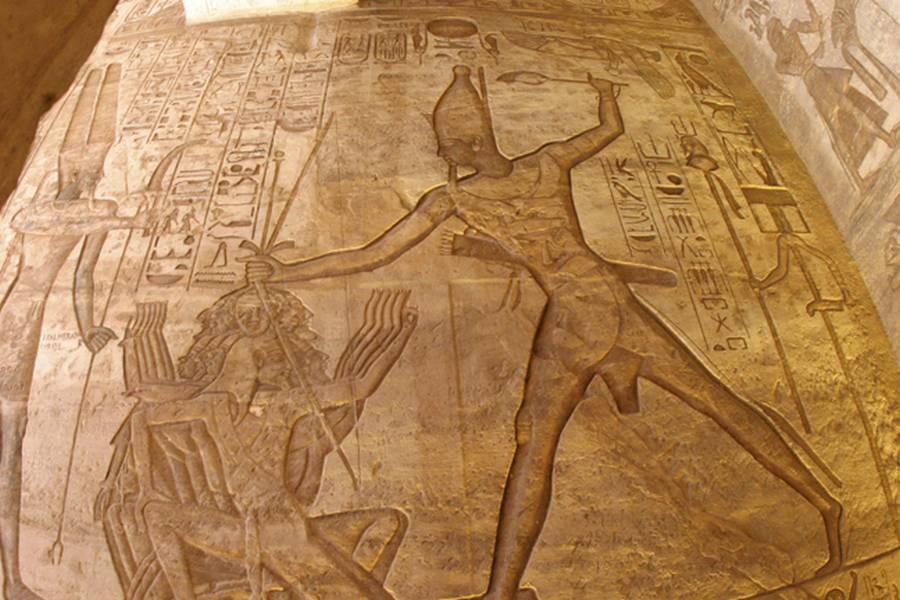
Well,
I recently found myself staring at a partially reconstructed facade of Temple 200 from Naqa, built by the Kushite King Amanikhareqerem in the 1st or 2nd century AD (Meroitic), at least 1300 years after Ramesses' relief was commissioned at Abu Simbel. Open and download image and zoom in for detail.
It's the same scene! Especially the panel on the left is basically an inverse image of Ramesses' scene, created well over a millennium after the original source of inspiration was created. This is an example of a direct parallel between the New Kingdom and the 2nd Kingdom of Kush, well into the Meroitic period. Which is a little crazy... You might wonder what is the value of the Kushite version of the scene, if it's just a copy? Well, it's not a carbon copy. Kushites remixed everything and gave it their own spin. In this scene, Amun of Thebes seems to be replaced with Amun of Napata. There are lions at the feet of the king, unlike the Ramessede scene. Lions in such scenes aren't unknown in Egypt of course, but the style in which the lions are depicted is totally different. Amanikhareqerem is also wearing a similar, but more elaborate outfit than Ramesses in the left scene. The same type of outfit seen on Natakamani from his relief on the pylon of the lion temple in Naqa. Amanikhareqerem in the left panel is also wearing the same crown as Ramesses II. On the right scene the King is wearing a full body scale armor from his torso and arms, down to his knees. This type of armor isn't present in similar Egyptian scenes, but it's the same type of scale armor seen on a relief of Kushite King Tarekeniwal on the pylon of his pyramid chapel at Meroë. Also, the king is holding prisoners by their hair, while a spear with a massive blade can be seen sticking out vertically above the prisoners' head. Again, this confirms that the large blade sticking out above the head of prisoners in a variety of Kushite reliefs isn't a sword as some assumed, but the immense blade of a spear, whose shaft is obscured by the prisoners. Very similar spears with blades between c. 50 and 70 cm were actually found in the royal graves of El Hobagi (Post Meroitic). These types of spears are not known in Egypt to my knowledge. So basically, we're looking at the same scene as the Ramessede scene, adapted to a Kushite reality, with the king wearing typical Kushite versions of royal attire and armor, while holding at least one typically Kushite weapon. But not all the weapons in the scene are different from their Egyptian counterparts. The sickle shaped blade in the hand of Amun can be seen on both sides of the pylon. Essentially the same type as the one in the Ramessede scene. This is the blade that I believe the Kushites referred to as "šꜥd n ’Imn-Rꜥ" or "the Knife of Amen-Re", which is apparently distinct from the Khopesh of Amun. Note that just above the sickle shaped blade of Amun on the right panel, there is a circle (I assume to denote the holiness of Amun's weapon). The victory stele of King Tanyidamani (c. 100 BC), which I believe features a stylized full sized khopesh also has this circle above Amun's blade, which is much larger than the small blade in Amanikhareqerem's relief.
Close up of one of the lions from Amanikhareqerem's temple. Lions aren't an uncommon depiction in Egyptian smiting scenes, but this Kushite style is totally different.
The temple in question, in Naqa, right next to the Amun temple
One example of an area where a comparative approach was necessary was Kushite boats/ships. There was very little to go on for a while, until discovering the crude graffito that depict a number of types of vessels similar to Egyptian models. I originally provided the following New Kingdom example of the ships of the King's son of Kush in a Theban scene:
Well, I just came across a crude Meroitic period graffiti from Philae, depicting a ship which looks quite similar, more than a thousand years later. Typical high, upward and inward curving stern, elevated prow, cabins, double rudder, and this one also has a central mast.
Of course there are many, many parallels that can be drawn between the two civilizations, and the ones mentioned here are simple illustrations of a concept that can be expanded to almost every aspect of their respective societies (with caution), including military. There were many differences as well, and that's why sticking to purely Kushite sources when and where possible is always the best approach. But where this isn't possible, for specific things like military formations or details in ship-design, looking at the New Kingdom is the closest you're going to get, for now. And this isn't a bad approach as long as you're already intimate with all the Kushite sources on the respective subjects first.
So basically when it comes to comparing the New Kingdom to the Napatan and Meroitic periods, many aspect can be summed up as follows: same same, but different.
This is also why I thought it was a bad idea to remove Nuba and Blemmye mercenaries, because you'll essentially end up with a Kushite faction that's pretty much just a rebirthed Iron Age New Kingdom, which is kind of how the Kushites viewed themselves, but it's also not the full story. What differentiates Kush from Egypt is the Kushite periphery, a tribal wild land, a savannah biome full of exotic people plants and animals, as opposed to the Egyptian periphery, which was just sand.
-
 2
2
-
-
@Alexandermb I really love the work you do! But I guess you know that by now. Maybe it doesn't get said enough, but you art contributions all look fantastic, and I love to come to the forum and see what you're up to this time. I'm one of those people who zooms in a lot. A lot! In single player I remove the camera restrictions almost by default, and love to bring the camera down to a really low angle every once in a while to "see things from my soldiers' perspective". I've been doing this for years before ever even joining the forums. I've noticed friends of mine zooming in like that to appreciate the art up close as well. We notice details a lot, and love them. The more the better, lol...
I also agree that it's good practice to make new art assets of the highest quality, even if they're not immediately useful or need to be downscaled for their final inclusion in the game. I think it's obviously a bad idea to constantly be playing catch up with bigger titles...
Currently there are issues on the game-engine side, which limit the productivity and effectiveness of the art contributions. Artists should make the best art they can, and game engine needs to be updated to implement industry standard functionalities like anti-aliasing, anisotropic filtering, instancing and LOD systems (aren't there dynamic LOD systems that don't require any new modeling work?). Aside from all the other stuff that needs to be done to bring the performance up to scratch, like pathfinder improvements, moving as much as makes sense to C++... if I understand correctly there was even some GUI stuff that causes lag...
I think asking artists to make sub-standard models or textures, because the engine can't handle what is considered low-poly by most other engines is not so good. (20.000 poly's is considered low-poly, pretty much everywhere these days). I don't think anybody still uses 256x256 textures anymore, so having 512x512 or even higher variants on hand for when the engine gets on point is a good idea. We shouldn't be thinking about what looks acceptable today, but ask will it still look acceptable 2 or 3 years from now. The game is still in alpha, and if it gets released with models and textures from the previous decade, it's going to look like a game from the previous decade. We need to think ahead about these things... The same person that's complaining about not being able to run this game on a 10 year old potato is eventually going to buy a new computer, and ditch 0AD in a heartbeat because it looks so outdated compared to all the other games he can now run on his system.
-
 1
1
-
 1
1
-
-
1 hour ago, Nescio said:
Out of curiosity, what is the attested word for an ordinary sword?
Not sure, those typical short swords only appear in the Meroitic period, to my knowledge (Meroitic not being understood). Previous iterations of blades approaching the size of a short sword during the Napatan and even Kerma period look like oversized daggers evolved from Kerma-Period designs. I suspect they'd be referred to as knives or daggers:
Kerma Period daggers:
At 52 cm, the one on the left is the largest one I've seen so far
+30 cm Napatan period blade:
From the stele of Taharqa in Kawa, we have the term "ḥmt sft", among his donations to the temple, which means "copper knife", "sft" meaning knife.
The Adoption Stele of Aspelta refers to the knife of Amen-Re, as "šꜥd n ’Imn-Rꜥ". I suspect this refers to the smaller type of curved blade also sometimes referred to as khopesh.
New Kingdom example of what I think "the knife of Amen-Re" refers to (human form of Amun on the left):
Here's another example of a type of bronze knife, from Kerma. I don't know it's date though:
Also, if you're wondering, khopesh refers specifically to a curved blade:
QuoteThe word 'khopesh' may have derived from 'leg', as in 'leg of beef', because of their similarity in shape. The hieroglyph for ḫpš ('leg') is found as early as during the time of the Coffin Texts (the First Intermediate Period).
So yeah, my best guess for straight, double edged short swords would be "knife": "sft"
52 minutes ago, Genava55 said:However, it seems on the wikitionary that the Greek word ξίφος (xíphos) could comes from the Egyptian zefet (zft), which has continued in Demotic Egyptian as sefy (sfy), which designate both a knife and a straight sword.
How interesting... So yeah, "sft", "zft", "zefet", "sfy", or "sefy", your choice

-
9 hours ago, Alexandermb said:
@Sundiata would it be possible to have another hair like texture like the one you did for the horses, but this time i 512x128 for long hair whitout alpha space ? would work for have at least a better hair like shader for the plumes of every civ (and mabye crest)
Ok, I'll see what I can come up with...
By the way, that artwork of the Persian cataphract with the face mask, is sooooo beautiful, but I don't think face masks were adopted by Persians proper until the Parthian period.
-
 3
3
-
-
Oh, so we all agree here that Macedonians should have Thracian Black Cloaks armed with rhomphaia? Sorry I misunderstood @wowgetoffyourcellphone
Let's ask @Nescio to be sure. If all the history enthusiasts agree, we can add the Thracian unit to the Macedonian roster, to help them out with those pesky rams. Macedonians would probably be played more often then, and it adds some nice regional context to the faction.
-
 2
2
-
-
59 minutes ago, wowgetoffyourcellphone said:
In either case, there really isn't any historical justification as far as I know.
Swords were a standard secondary weapon for the Macedonian army, even for units like peltasts. I think swords were secondary weapons for most civs that used them anyway... Even the Spartan skiritai is randomly given swords even though they seem to have fought as light hoplites with spears.

Alexander and his buddy with sword in hand, doing some naked lion hunting, because who needs clothes when you're emperor of the world, right? From a mosaic at Pella.
Macedonia is also a lot closer to Thrace than Athens, and the Macedonian army was chockfull of Thracians. I know a lot of them were equipped in the Macedonian fashion, but all of them?
Is this image so wrong? Thracians at the battle of Pydna. (I just saw you commented on this image way back in 2013, lol)
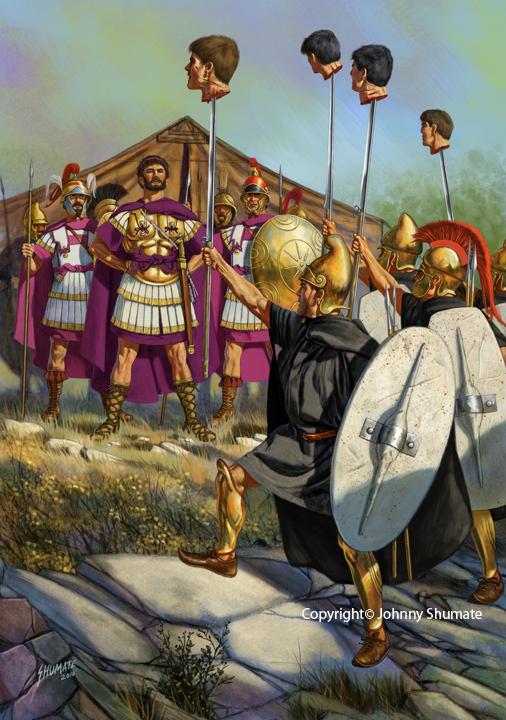
-
 1
1
-
-
6 minutes ago, wowgetoffyourcellphone said:
Don't they have Champion Swordsmen?
Ah I missed the Thracian Black Cloaks for the Athenians but what about the Macedonians? I can't see any swords...
-
Quick question, how do you take out rams when playing as Macedonians and Athenians? And why don't they have swordmen?
-
 1
1
-
 1
1
-
-
57 minutes ago, Genava55 said:
That's a problem. I wonder if anyone did a comparative analysis of the civilizations before to design the factions. Clearly, the Celts are not economically better than the Greeks, the Romans or the Persians.
Nor were slingers their primary offensive units. I think playing with Celtic factions should intuitively make you focus on spearmen, swordsmen and cavalry, using slingers for defensive or harassing purposes. Ranged units in general should have limited effectiveness when attacking a unit with shield from the front, but more effective when hitting them from the side or back. This would encourage flanking maneuvers.
I'd vote to get rid of all these weird extreme civ bonuses, and replace them with more normal ones. Like with Ptolemies. Why would anybody get free houses? Just give them a nominal cost at least. Build times really don't count as a cost here, and increasing build time of mud-brick structures to compensate for them being free is the wrong way to go imo... Houses should rather be built more quickly, but also have much lower health. Mauryan elephants increasing efficiency of assigned builders makes sense, but elephants building an entire structure from its foundation without any human present really doesn't belong in a game like 0AD imo. Iberian starting walls are the main reason I barely ever play them. I think It's annoying and it's not like Iberians were so famous for their walls... Everybody built walls...
Rams can literally outrun infantry... And things like catapults, bolt shooters and scorpio's have an insane pierce armor (50?). Why? These aren't covered siege engines. Once infantry reaches them they should be as good as dead. And since they're not covered, they should be vulnerable to enemy ranged units as well.
Military camps are cool, but why can't Ptolemies and Seleucids build more CC's?
-
 1
1
-
-
3 minutes ago, Nescio said:
Those mercenaries still exist, I just haven't decided whether to keep them civ-based or make them map-based. Gauls, Mauryas, Romans don't have mercenaries either, though they easily could.
I see. Why choose? Civ-specific mercs and map-specific mercs could coexist peacefully... Well maybe not peacefully, but you get my point...
-
 1
1
-
-
36 minutes ago, Nescio said:
Those all look like spearmen to me.
? You were reacting to genava questioning the use of phalanx this time, remember? I didn't say those weren't spearmen, lol...
36 minutes ago, Nescio said:In 0 A.D. this one is trainable at the generic temple and the Kushites already have five champions, so dropping one isn't unreasonable.
Again, it's up to you, so no worries. Although Kushite royal family members emulated the look of various gods for various reasons, having an entire army of lion-headed axemen is probably the least historical unit you could theoretically spam. But because they're expensive champions I've never seen people spam them before, so it didn't look like a concern to me. It would probably be more realistic to see 1 or a handful supporting a main force, organized under the temple. Something like this Ramesside chariot driver in the form of Re Horakhty:
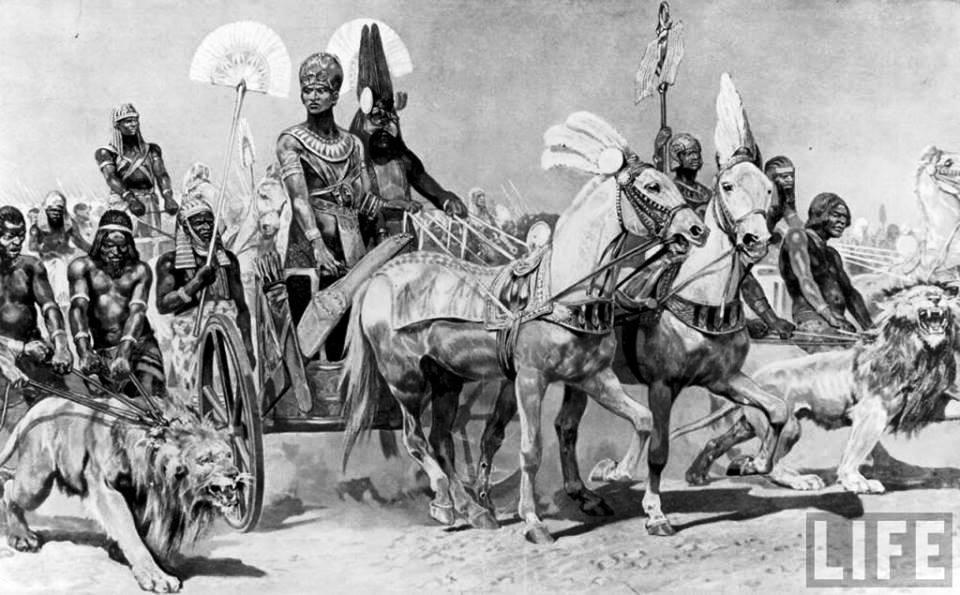
Maybe you could re-use the lion-dude as the Chariot driver for Amanirenas?
Your roster seems to remove all Nuba and Blemmye mercenaries. Now the army is composed entirely of people from the Kushite heartland. You remove character and context by doing this. If calling them levies makes you more comfortable, go ahead, but it's like you're trying to hollow out the roster just because..
-
On 8/24/2019 at 9:25 AM, Nescio said:
Exactly!
As I said, I've not come across any primary sources that describe any Kushite formations in any detail, so it's not strange, not to be able find info on this specific formation. But phalanx formations were first developed by the Sumerians and were employed by the professional armies of the Egyptian New Kingdom over half a millennium before being attested in Greece. For c. 500 years during the New Kingdom, and then c. 100 years during the 25th Dynasty Egypt and Kush was one country with one military, and Kushites formed a significant component of that military. I've not seen any evidence for the phalanx falling out of use. In fact from the early 6th century BC Greeks and Carians were employed by Psamtik II in his invasion of Kush, which means Kushite armies were facing hoplites using the Greek phalanx for the first time in 592 BC, and from the time of Alexander the Macedonian phalanx became the king of the battlefield, something the Kushites probably faced many times in their various engagements with the Ptolemies. The idea that these tight, long and deep heavy infantry formation somehow fell out of use, in the face of enemies who continued to use and develop the technique is a strange one, also considering an array of Sub Saharan Africans depicted in art from Classical Greece and Ptolemaic Egypt wearing Greek armaments, suggests they weren't strangers to the developments of the Mediterranean (the rich Hellenistic imports found in Kush confirm this).
SpoilerNew Kingdom phalanx from Thebes. Note how their shields are also strapped to their shoulder or arm, to free up both hands, similar to the round shields strapped to the shoulders of those Kushite warriors from one of the previous posts.
Theban infantry from the tomb of Mesehti
Blacks in military context outside of Kush wearing Greek, or Greek influenced attire, indicating a level of familiarity with Greek military customs through service in Persian and Ptolemaic armies:
Throughout the Napatan period there is no indication of a dramatic shift from New Kingdom tactics and equipment. Not until the Meroitic period can you expect stronger changes to occur, but much of those changes occurred due to Ptolemaic influence, making it even less likely to drop these types of heavy infantry formations.
What I can glean about Kushite military structure from reading their stelae is their hierarchy. The King, the priests, and the overseers on top. Then generals, commanders and chiefs. All split into their respective branches: infantry, navy, cavalry, chariotry. There's also things like commanders of the fortresses, district commissioners and governors, which all undoubtedly had military duties as well. We just don't have many details about any of it. They distinguish between things like bowmen, footmen, companions, auxiliaries, sailors, guardians, elite troops and a royal army. They also have things like agents, and in one stele an entire unit was referred to as "mutilators"... They're just vague about specifics because these stelae weren't military documents. They served a totally different purpose from the Greco Roman writings of people like Arrian. The sources aren't comparable, so looking for the same level of detail in descriptions from Kushite royal dedication stelae and the like is a little bit ridiculous.
On 8/24/2019 at 9:25 AM, Nescio said:One temple guard is enough.
Sure, remove the warriors from the temple of the god of war...
On 8/24/2019 at 9:25 AM, Nescio said:By the way, was the khopesh still used in the 3rd C BC?
Genava quoted the relevant pieces. The Khopesh is closely associated with Amun, so that would explain why they maintained the weapon. King Aryamani, 3rd century BC is literally referred to as "Lord of the Khopesh", in his donation stele at Kawa...
Again, I don't think there is any evidence for scimitars ever falling out of use in Sudan, rather indications that they evolved into, or influenced the development of a number of later regional African Iron Age swords, especially the Ethiopian/Eritrean Shotel (also used in Sudan) and the Central African/Southern Sudanese Mambele/Makraka are taken as examples:
-
19 minutes ago, Genava55 said:
Since the Kushite faction has already a very diverse roster, maybe the pikemen can be moved to a champion unit or to a reform to research by the player as suggested by Sundiata.
I don't think having a Kushite pike champion is a good idea. They had pikes, but they shouldn't be better than Hellenistic ones...
22 minutes ago, Genava55 said:However, I found suspicious that nobody clearly expressed their use of the phalanx. Maybe it is only a long spear like in the case of the Cherusci.
I've never actually come across any source discussing their formations, except for maybe a little in Heliodorus' Aethiopica, which is a romance, and not a work of history. It's written to a semi-historical backdrop, with fictitious characters featuring a war between the Persians (under Oroöndates) and Kushites (under King Hydaspes). Herodotus and Strabo both actually talk about a failed Persian invasion into Kush by Cambyses, who actually reached Lower Nubia. Kush was ruled by King Amaninatakilebte at this time. This event may have been the inspiration for Heliodorus' battle, which also takes place in Lower Nubia:
QuoteWith such a band of horsemen and the Persian army thus appointed the governor set out against his enemies, keeping the river ever behind him; for as he was far inferior in numbers to the Ethiopians he planned that the water should be instead of a wall that he might not be surrounded. Hydaspes likewise brought on his army and placed the soldiers of Meroe, who were skilled to fight hand in hand with heavy swords, against the Persians and the Medes on the right wing. The Troglodytes and those who come from the country where the cinnamon grows, light harnessed soldiers and cunning archers and very swift of foot, he set against those who were on the enemy’s left wing. But against their centre, which he heard was the strongest, he set himself and his elephants with towers on their backs, together with the men-at-arms of the Blemmyes and the Seres, whom he instructed what they should do when they came to fight. When the signal was given for battle, among the Persians by 274trumpet, with the Ethiopians by drum and timbrel, Oroöndates with a shout led on his men to the charge. Hydaspes for his part advanced as slowly as possible step by step, by this means providing that the elephants should not be far from their supports and that the enemies’ cavalry in the centre should be weary before they came to blows. When they were within shot, and the Blemmyes saw that the mailed cavalry were calling on their horses for a charge, they did as Hydaspes had commanded. Leaving the Seres to protect the elephants they ran out from the line against the horsemen, so that those who saw them might have thought that they were mad, who being so few durst encounter so many and so well armed. Thereupon the Persians spurred their horses to go faster than before, thinking that the enemy’s boldness was their gain, and that they would at the first dash overcome them without ado.
But the Blemmyes when they were almost come to hand strokes and in a manner stuck by their spears, suddenly all together fell down and crept under the horses kneeling with one knee upon the ground and sheltering their heads and shoulders beneath, without any harms save that they were trodden a little by their feet. And then they themselves did a strange and unexpected thing. As the horses passed over them they thrust with their swords and wounded them in the belly, so that many of their riders fell, by reason that the horses could not be governed because of their pain and so threw them. Whom, as they lay in heaps, the Blemmyes stabbed under the thighs; for the Persian horseman is not able to move unless he has some one to aid him. Those who escaped with their horses whole then charged against the Seres. But they, as soon as they came near, stepped behind the 275elephants, as though behind some great tower or hill of refuge. Then there was a great carnage and the horsemen were almost all slain. For their horses, being afraid of the greatness and strange sight of the elephants, thus suddenly revealed, either turned back or ran aside, and caused the main battle to break its array. They who were upon the elephants — six men upon each, two fighting from every side save the behind — shot steadily at the mark from their tower as from a castle, so that the number of their arrows was to the Persians like a cloud. The Ethiopians aimed especially at their enemies eyes, as though they were shooting not for life but to see who were the better archers, and hit their mark so exactly that those who were stricken ran here and there in panic with arrows, as if they had been pipes, piercing their eyes. If any of them against their wills rode out from their ranks, because their houses could not be checked, they fell among the elephants; where they died, being either overthrown and trodden under foot by them or else killed by the Blemmyes and Seres who ran out from behind the elephants as from an ambush, and wounded some with arrows and slew others at close quarters when their horses had cast them to the ground. To be short, those who escaped did nothing worthy of recounting nor hurt the elephants a whit, since the beast is covered with iron when he comes to battle, and if he were not, he hath of nature scales so hard over his body that no spear can enter thereinto.
At last, when all who remained alive were put to flight, the governor with shame enough forsook his chariot and mounting a horse from Nysa fled the battle. The Egyptians and the Libyans who were on the left wing knew nothing thereof, but fought on 276manfully, though they received many more wounds than they gave; marry they held out valiantly. For the soldiers of the cinnamon country being set against them pressed them hard and drove them to such shifts that they knew not what to do. If they set upon them, these would flee and running ahead would turn their bows behind them and shoot as they fled. But if they retired, then would they pursue them closely and either with slings or little arrows poisoned with dragon’s blood send upon them a swift and grievous death. For in their archery they are more like men at play than at serious work. They wear a round wreath upon their head in which the arrows are set, the feathers turned inwards and the points hanging out like the beams of the sun. In skirmish they take out the arrows therefrom as readily as from a quiver, and leaping and dancing in and out like naked satyrs, they shoot at their enemies. They have no iron heads upon their shafts, but take a bone out of the dragon’s back, whereof they make their arrows an ell long. This done, they sharpen it as well as they can and make a self-barb arrow, so called perhaps from the bare bone.
For some time the Egyptians maintained the battle and received the arrow upon their shields, being stubborn by nature and men who boast — not so much profitably as proudly — that they care not for death: and perhaps also they feared punishment if they left their ranks. But when they heard that the horsemen, their chief strength and hope in battle, were put to flight, and the governor gone, and that the much praised soldiers of the Medes and Persians had done no noble feat, but after hurting the men of Meroe a little and being themselves hurt much more had followed after the rest, they also began to leave 277fighting and turned in rout. Hydaspes seeing this notable victory from his tower, as from a high hill, sent heralds to them that followed the chase not to kill anyone but to take as many as they could alive, and above all other Oroöndates. Which indeed was done. The Ethiopians drawing their main battles to the left, and extending their deep formation lengthwise, turned their wings round about and so inclosed the Persian army, leaving them no place to flee but across the river: into the which many fell and were in great danger among the horses and scythed chariots and the turmoil of the multitude. Then they perceived that the policy which the governor had used in the conduct of his army was very foolish and to no purpose; because at the first, when he had feared lest his enemies should surround him and led his army so that the Nile was ever at their backs, he marked not that he left for himself no place whereby he might flee.
-
1 hour ago, Nescio said:
Celtic and Roman swordsmen have double-edged swords and oblong shields, though.
Yeah, admittedly a bit of speculation on my part, based on what my amateur eyes can glean from Beja sword fighting. It's really difficult to find good info on their techniques, but what seems clear is that it's very different from European traditions. They have this funny habit of staying very low to the ground, in a crouching position, occasionally jumping up to take a swing at their opponents' head or center, or staying low and swooping at their opponents feet. They'll even rapidly raise the shield horizontally over their head to protect from downward slashing and then bring it down again just as fast. The shields move around a lot, and their compact form factor helps with that. Because the more recent swords are generally longer than Kushite ones, it's difficult to extrapolate, and the Kushite variants seem equally useful for stabbing (although they're always depicted in a slashing motion). I just can't think of a better place to look for clues than later Sudanese techniques. Either way, in more recent times, swordsmen in Sudan seem to use exclusively rhino, hypo or elephant hide round shields. Spearman (non-pikes) and javelinists used either the same round shields, oblong cow hide shields or wicker shields.
Sword dancing was used to practice skill but is now just a cultural tradition. I think kalashnikovs are preferred in real fights these days.
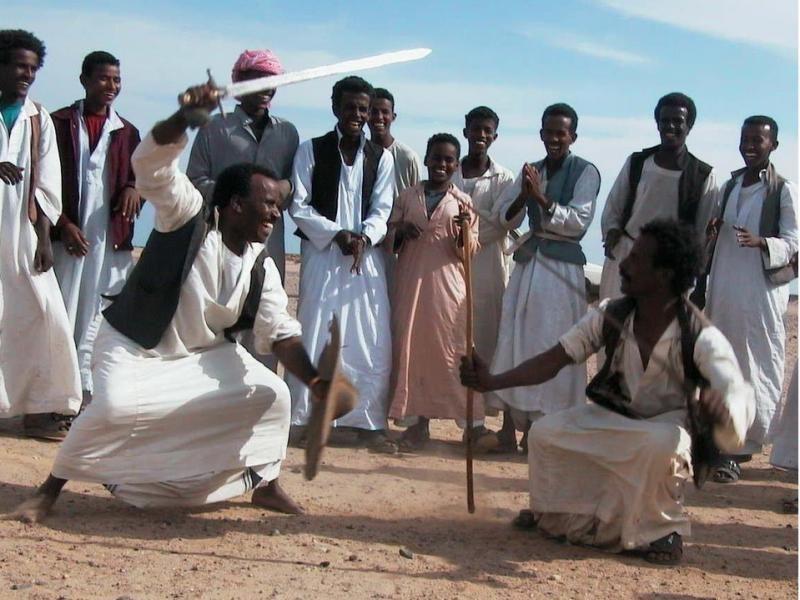
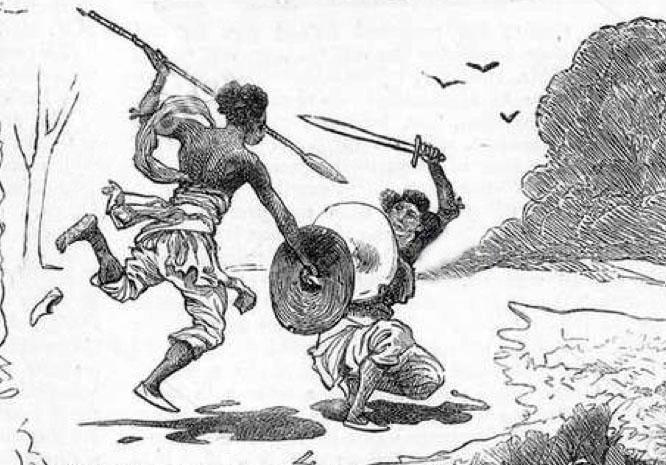
Here's a funny video from 1908 depicting some Beja putting up a performance, of sorts, for a caravan.
2 hours ago, Nescio said:Anyway, perhaps I will keep Kushite pikemen; and maybe add non-champion axemen; I haven't decided; more evidence is welcome.
I was in favor of having a non-champion axe-infantry unit, because axes were probably one of their most used melee weapons after spears, indicated by Strabo, depicted in Kushite relief and Ptolemaic figurines and a variety of them has shown up in the archaeological record. Apedemak is almost always either depicted with a spear or a bow and arrows. The choice to give the axe to the Apedemak temple guard was a compromise.
-
5 hours ago, Nescio said:
A fair question. We can all care about realism yet make different choices. My mod focuses on the 3rd C BC; “might have” is not always good enough for me. For that reason I've also removed the maiden guard (the Mauryas did indeed have female palace guard—presumably similar to how other dynasties employed eunuchs—but it's unlikely they're employed on the battlefield) and the Ptolemaic camel archer (Nabateans did have camel archers, but camels aren't mentioned in the major battles involving the Ptolemies).
I understand, and at the end of the day, it's your mod, so feel free. I also wish to focus on realism, and depict civilization as they most probably looked, not to create a sterile culture devoid of everything that isn't 100% certain. The more proof, the better of course, but when dealing with Antiquity in general, few things are absolutely certain to begin with, especially outside of a Greco-Roman context.
Unlike Eurasian warrior cultures, Kushites usually didn't burry their dead with weapons of warfare. Not until the politically tumultuous Post-Meroitic Period do we see larger cashes of weapons of war in grave sites with some regularity. Most weapons in the earlier graves can be associated with the hunt, not necessarily war. They didn't create figurines or statues of warriors. They didn't often create frescoes or reliefs depicting battles. Actually they did, but most of the battle scenes were located on the upper or middle registers of now disintegrated walls. The few remaining battle scenes are heavily damaged and poorly documented. They didn't write elaborate works on military equipment and tactics, and foreign accounts are often somewhat unreliable... So our understanding of Kushite warfare is based on the exceptions in the aforementioned fields. Because of the richness of Sudanese history and archaeology, we have a lot of exceptions though, which helps a lot, and allows us to create a relatively complete image.
With regard to Kushite pikemen, I was always wondering what the specific word was that Strabo used, that got translated into pike. So I thank you! I learned a new word, "κοντός". I'm quite satisfied with the translation, as it seems to confirm the use of a larger, two handed thrusting spears (pikes), somehow comparable to the large lances used by Iranians or the pikes used by the Cherusci. This is in line with the large thrusting spear depicted in the graffiti from Musawwarat. It's also in line with the large variety of Kushite spear tips in the archaeological record: small ones were used for javelins, medium sized (c. 20 cm) for conventional spear, large ones (+30 cm), we can assume were used for pikes, and even larger ones (+50 cm) were used for cutting/slashing (I'm assuming these were used specifically for cavalry).
5 hours ago, Nescio said:ξίφος, which means specifically a short, double-edged, stabbing sword, but could also be used in a generic sense for any blade (as in that sentence from Strabo quoted earlier;
No, he's talking about actual double edged short swords as are depicted in Kushite art, not a generic blade. The problem seems to be that you don't even believe Strabo's account, while this account in itself even undersells the Kushites for obvious political reasons.
These are the ξίφη that Strabo means:
SpoilerTucked away in his belt:
Tucked behind his back
In-hand, raised above his head, with scabbard flung around his back
In-hand raised above her head.
Comparing to other scenes like this, the large blade sticking out above the head of the prisoners is probably one of those +50cm spear tips that I mentioned earlier, also depicted in the first image, which were also found in archaeological context at Post Meroitic El Hobagi (Kushites in the century after the fall of Meroë/terminal decline), together with swords and axes.
Here's an extremely rare, intact, Nobatian sword, Post Meroitic X-Group Culture (Ballana and Qustul). They inherited their military legacy from Kush. In fact they seemed to form part of the military aristocracy before the fall of Meroë.
Here are examples of 18th century Sudanese swords which bare a striking resemblance to the earlier Meroitic swords from the reliefs.
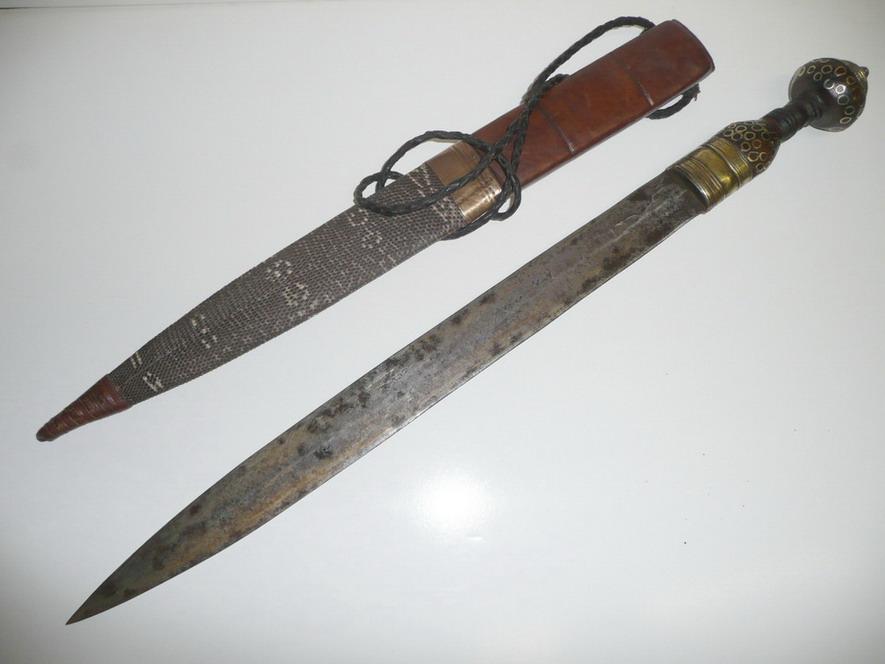
And these 19th century Sudanese short swords/elongated daggers that bare a faint resemblance to much, much earlier examples
Just to clarify, these 18th and 19th century examples have been around for a long time, and look pre-Islamic. Their similarity to the swords depicted in Kushite reliefs suggests that they are simply an evolution of these earlier examples, only to be supplanted by the Sudanese Kaskara from the 14th century onwards. The Kaskara is believed to be Arab-inspired sword, but as you can note, the unique shape of the scabbard is clearly the same as the shape of the Meroitic scabbard in the first relief, confirming the long lasting impact of Kushite sword traditions on later Sudanese swords.
(most Kaskara are long, but some are short)
5 hours ago, Nescio said:besides, pike doesn't square with θυρεός
That's not necessarily what Strabo said. He said they were "badly armed; for they carried large shields made of raw hides, and hatchets for offensive weapons; some, however, had pikes, and others swords", indicating that the swordsmen and pikemen were armed in a different manner. Kushites also used round shields and we know that they sometimes strapped small round shields to their left shoulder/upper arm, freeing up both hands. Sudanese swordsmen always use round shields. Oblong shields don't work well with their style of fighting. Oblong shields are carried by javelinists and spearmen.
Sometimes I like to look for clues in the much more primitive areas of Darfur and Southern and South Sudan. Up till the last century or so their culture was more or less unchanged from that described and depicted by Kushites, Egyptians and others, and can sometimes offer interesting insights. They're obviously distinct from Kushites, but there was also obvious cross influence (weapons, musical instruments, metalworking, some types of adornments, scarification, etc). Anyway, they also distinguish between short javelins, medium sized one handed spears and larger c. 3.5 meter long spears. Definitely not a sarissa, but approaching the size of a pike (I also think they used them in a 2 handed fashion). Unlike what Strabo, said, Kushites were well commanded, and the use of a similar weapon (perhaps slightly larger) in an organized army is probably what inspired Strabo to use the word κοντός.
Perhaps a compromise can be made. Kushite Pikemen start out with shorter 3.5 meter pikes like those used by their primitive tribal periphery to the South and South West, and transition to larger pikes comparable to the sarissa as they level up, to illustrate Ptolemaic influence from the 3rd century BC onwards. Quick photoshop of wowgetoffyourcellphone's pikemen:
@Stan` Were these shoulder-shields actually committed to svn? I don't know...
-
3 minutes ago, Nescio said:
Anyway, I got the answer I wanted, and can now remove Kushite pikemen from my mod with a clear conscience.

Euhm...?
So you don't consider the graffiti from Musawwarat a pike?
Forgive me for going straight to wikipedia, but the term kontos is used to describe a two handed +4 meter long cavalry lance in an Iranian context and a pike in a Germanic context...
QuoteIts length was probably the origin of its name, as the word kontos could also mean "oar" or "barge-pole" in Greek
As you indicated yourself.
I think there is a good reason why the term is translated as pike. I think you're confusing the term "sarissa" with the word "pike".
17 minutes ago, Nescio said:“pole-arm”
In the English language, when people use the word "pole-arm", they're usually referring to a two handed weapon.
As I've always indicated, it's probably not a sarissa, but a long, two handed thrusting spear used in a phalanx formation, aka, a pike. I don't understand why you'd want to remove that unit...
-
58 minutes ago, Lion.Kanzen said:
Looks very old documentary maybe 1998-2003
Don't quote the whole thing bruh, just tag me or something

But yes, 2 of those docu's are pretty old...
34 minutes ago, Nescio said:@Sundiata, the Kushites have pikemen in 0 A.D. Do you happen to know of any supporting evidence? It makes me wonder about the extent of Macedonian-style warfare.
Well, there's the English translation of Strabo's Geography XVII, section 54, which is most often quoted:
QuoteThey soon fled, being badly commanded, and badly armed; for they carried large shields made of raw hides, and hatchets for offensive weapons; some, however, had pikes, and others swords.
I can't make much sense of the original Greek text... But you can, so here it is.
I prefer to focus on the pictorial stuff, this graffiti from Musawwarat es Sufra in particular:
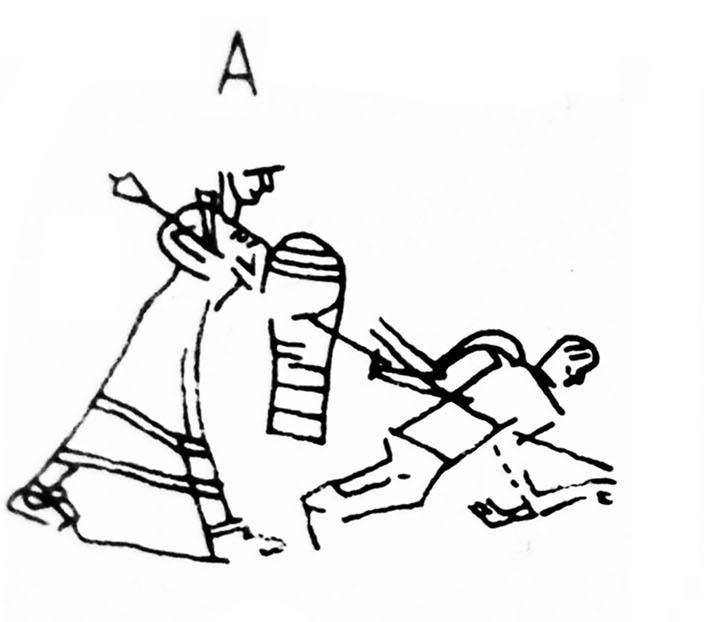
Shorter stylized spears are also depicted in some royal scenes with counterweights, reminiscent of sarissas.
And that Kushites differentiate between a shorter spear and a longer one. Shorter one is held in the middle, but the longer one is held from the back. I doubt we can learn much from the way stances are portrayed in Kushite art (Kushite artists followed convention more than reality when it came to some things like stances), but we can still see two different types of spears used in a different way. (These are probably not traditional sarissa wielding units in the Macedonian style, but long spears used in a type of Ancient Egyptian phalanx formation, which was probably further developed by repeated military conflicts with the Ptolemies).
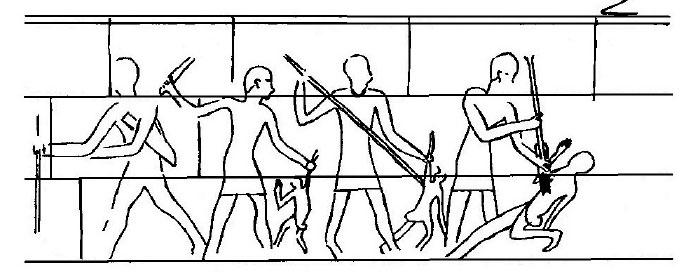
I just added the the lower left image to illustrate how they sometimes fixed a small round shield to their upper arm/shoulder, to free up both arms, which is very handy for wielding long spears in formation (something the Egyptians also did sometimes), even though here, the ancient artist depicted those warriors with short spears.
And this c. 30 cm long spearhead from Tombos is also rather reminiscent of the Macedonian sarissa, albeit somewhat smaller, it's still longer than most standard Kushite spearheads (except for the really long ones from El Hobagi, but that's yet another type)
-
 1
1
-
-
@Obskiuras If the idea is to create a vanilla compatible civ (500BC-1BC), then I would strongly suggest to model this civ on the early Germanic peoples of the Cimbrian War, which was a major conflict that involved the Romans, Gaul and the Iberian Peninsula. Then I would focus specifically on the Cimbri, Teutons, Ambrones and even a splash of Helvetii (Celtic allied forces like the Tigurini). The buildings should then be modeled on the archaeology of the Northern German and Danish Iron Age. See Genava's earlier references, and the references in this thread on Cimbri, Ambrones & Teutons. If it's to be vanilla-compatible, Germanics should be all thatch imo, perhaps one or two plank-roofs, while Gauls can have more wooden shingled roofs to get that opulent Celtic feeling, but Germanics shouldn't feel more opulent than Gauls. Thatch for the Germans and shingles for the Gauls. Maybe the Germans could have a single structure with shingled roof: the "Helvetii Embassy", to train some La Tene Period heavy swordsmen.
If it doesn't need to be vanilla compatible, then you could easily focus on the later Germanic peoples of the Migration Period. If you want Germanic stone architecture like the one's you referenced, I'd suggest checking out Millenium AD which already features the Carolingians (they also have the Norse). Perhaps they're interested in a Merovingian faction as well? Vandal Kingdom? Gothic Kingdoms?
By the way, I really like you concept arts... Please continue.
-
 1
1
-
 3
3
-

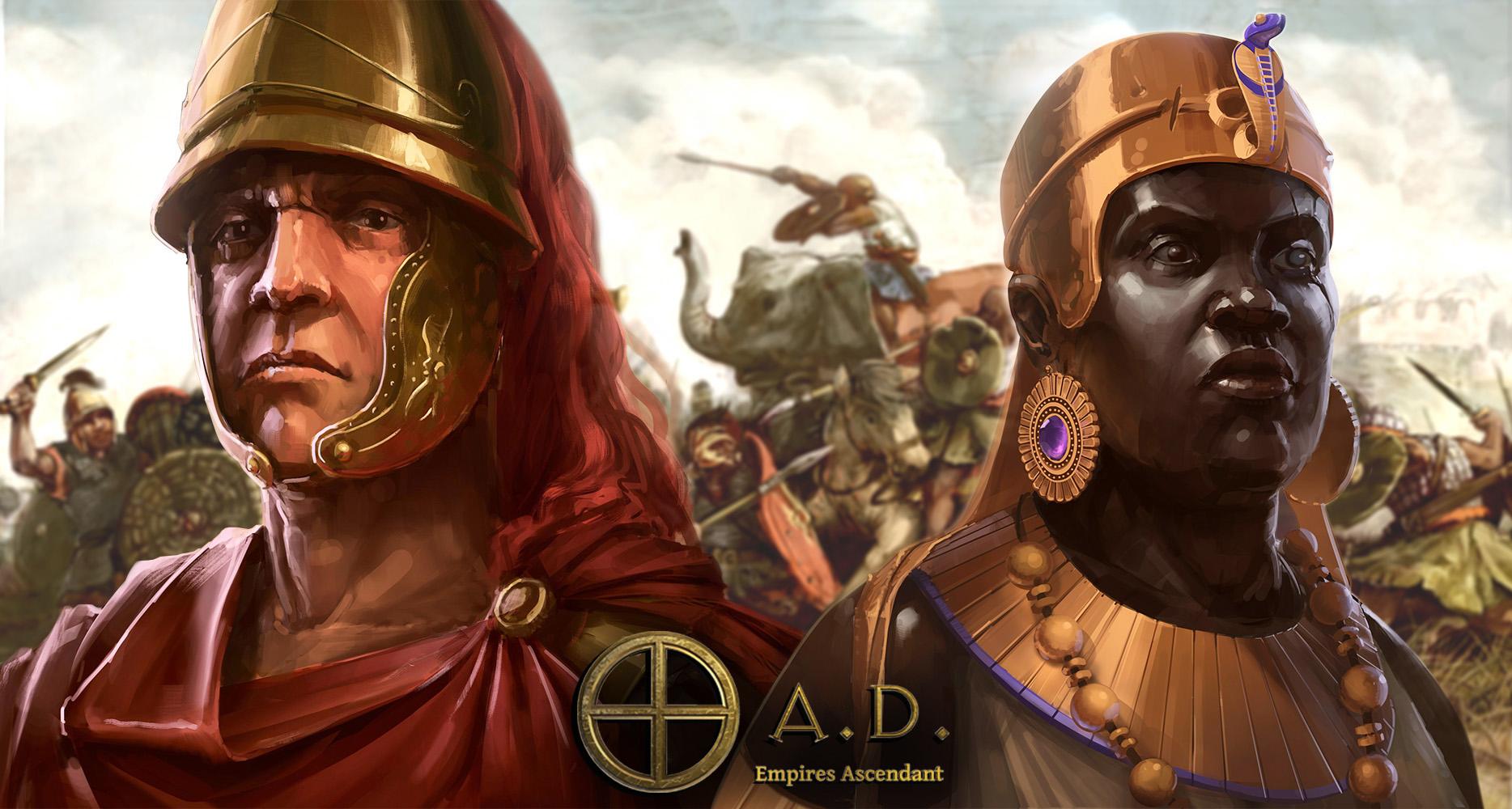

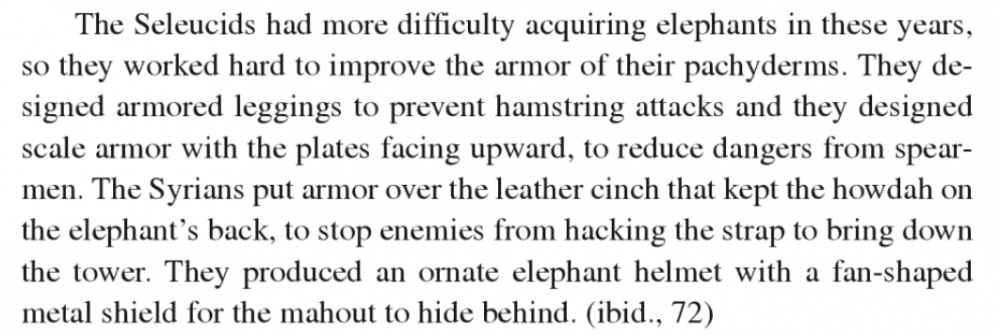
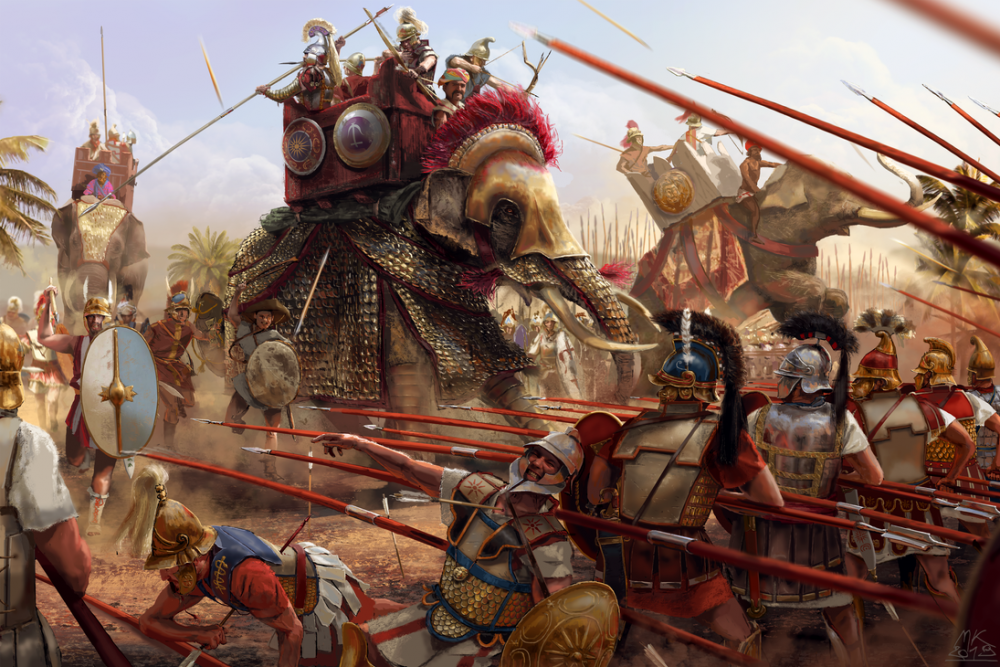
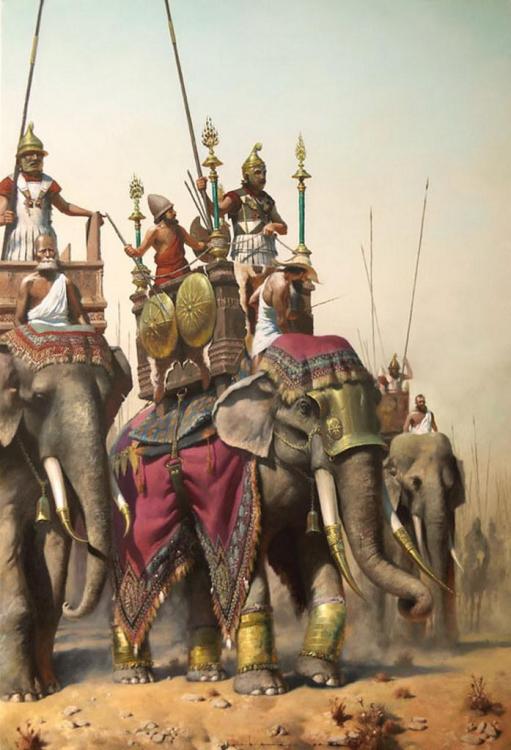
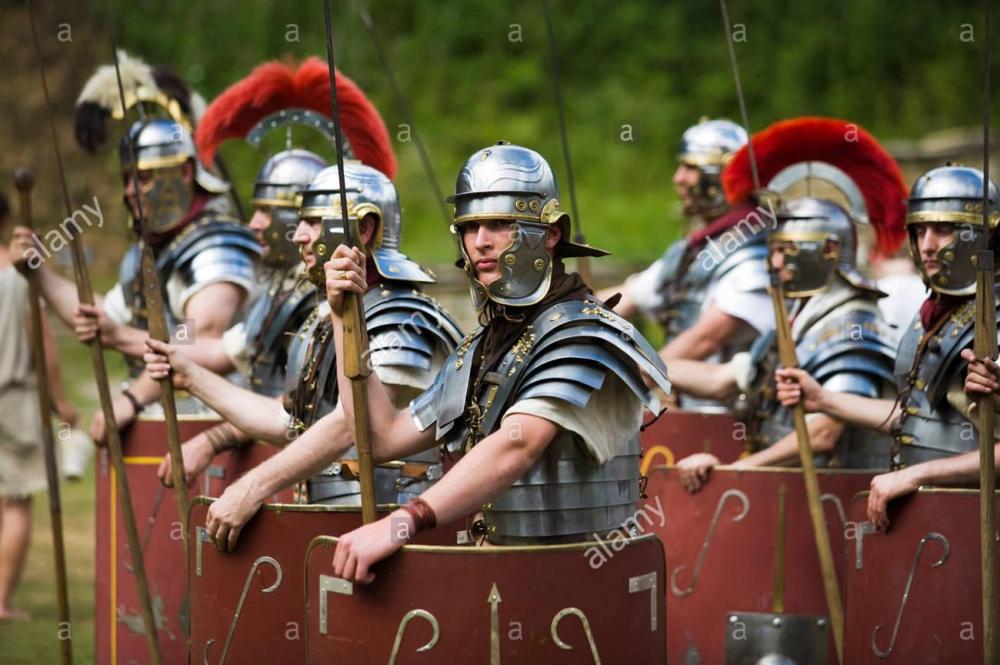
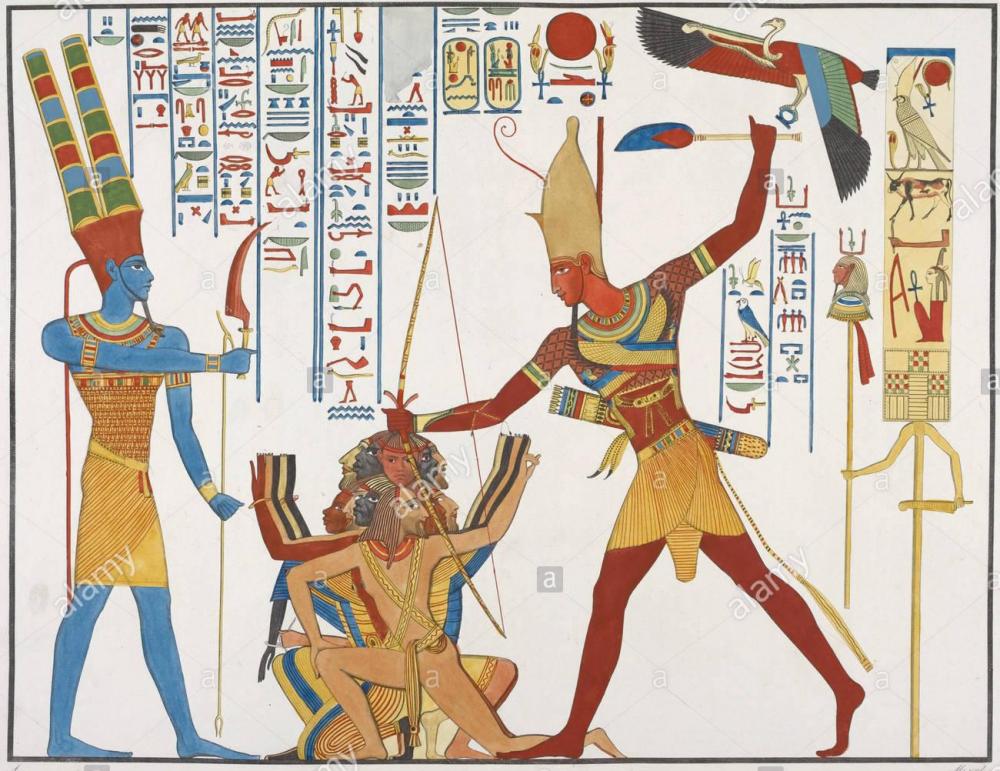
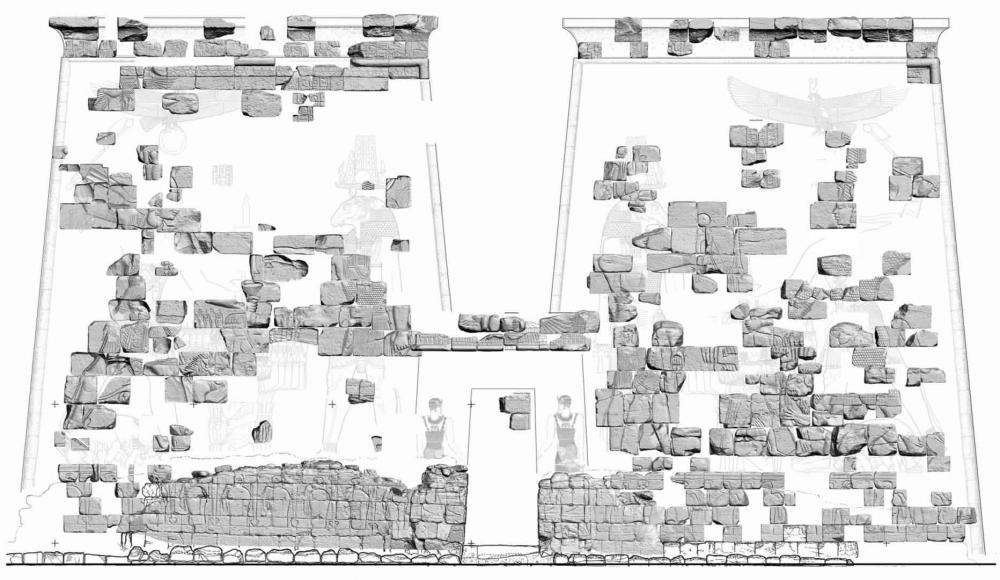
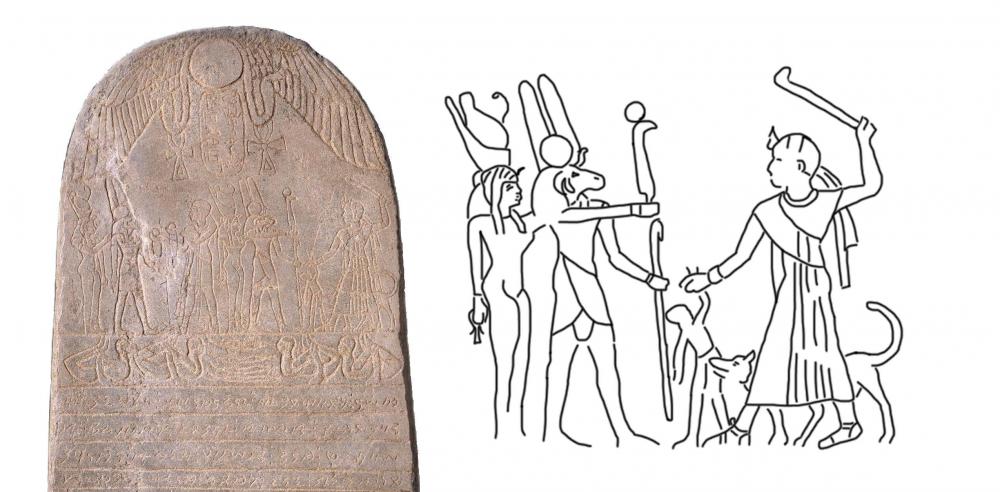
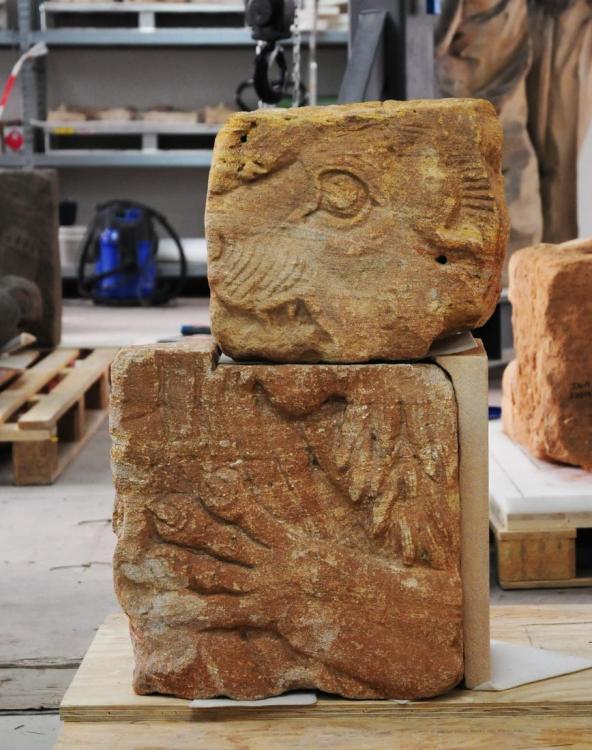
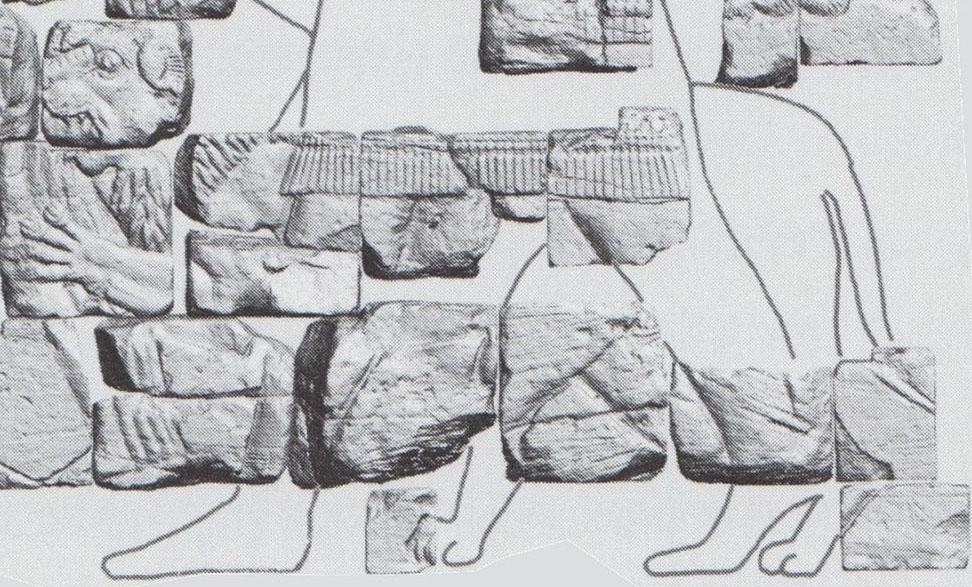
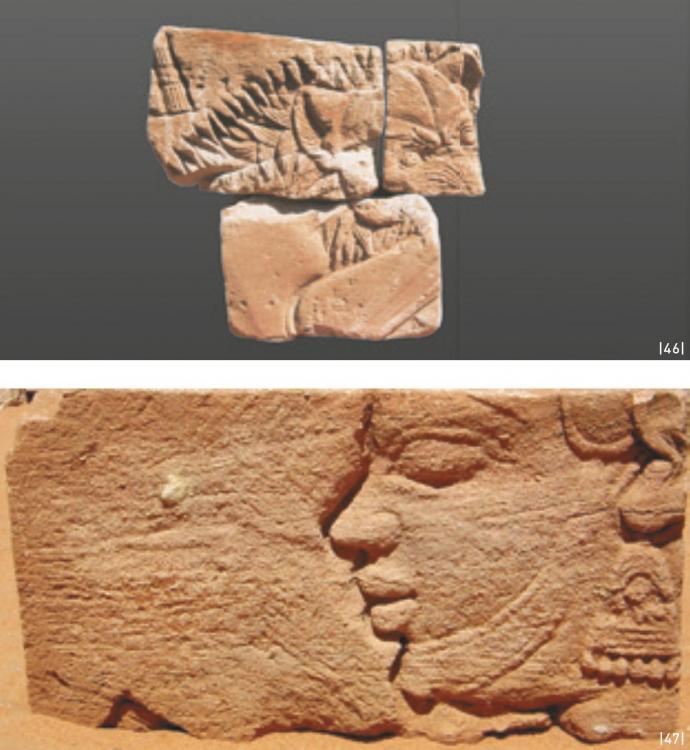
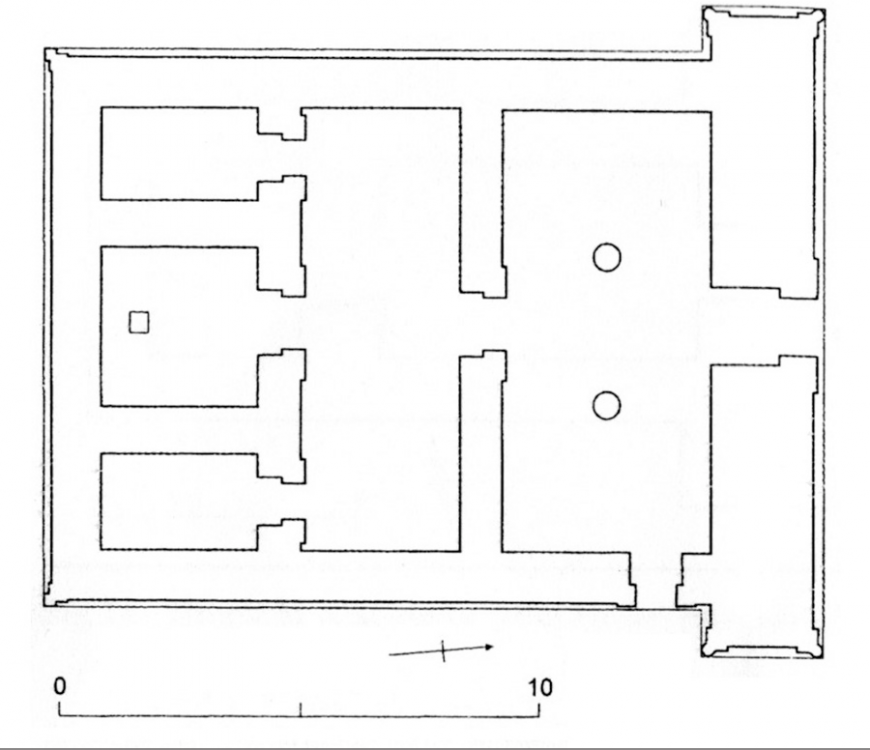
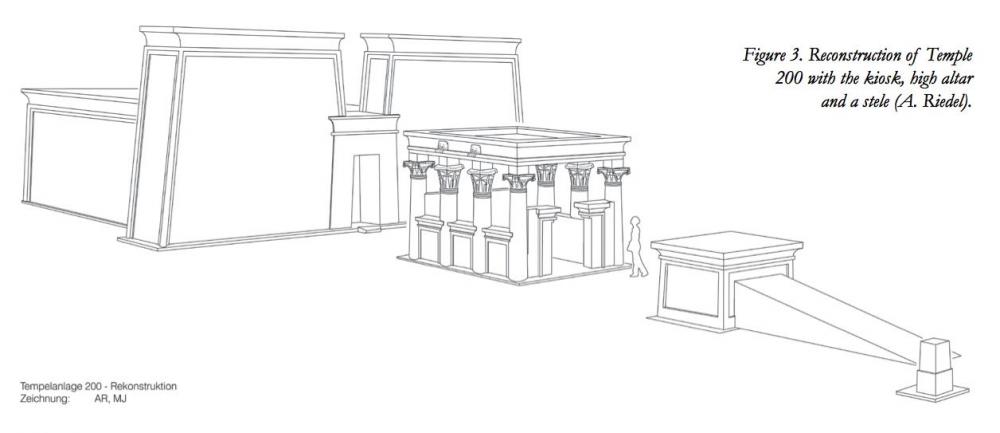
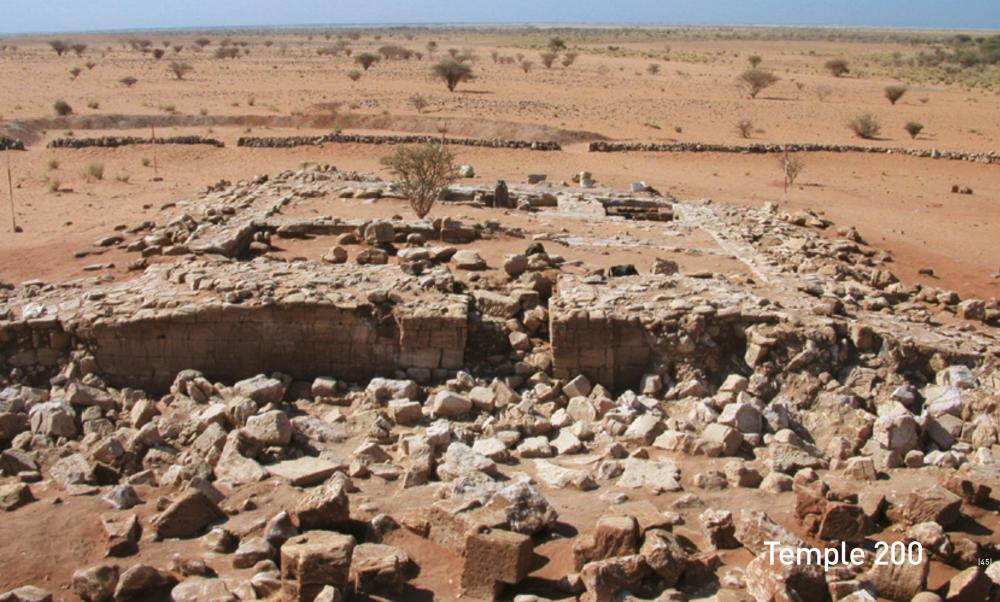
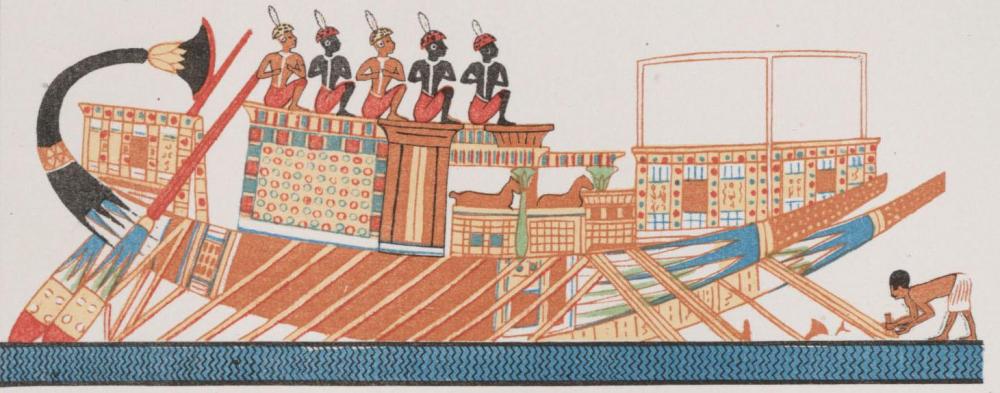
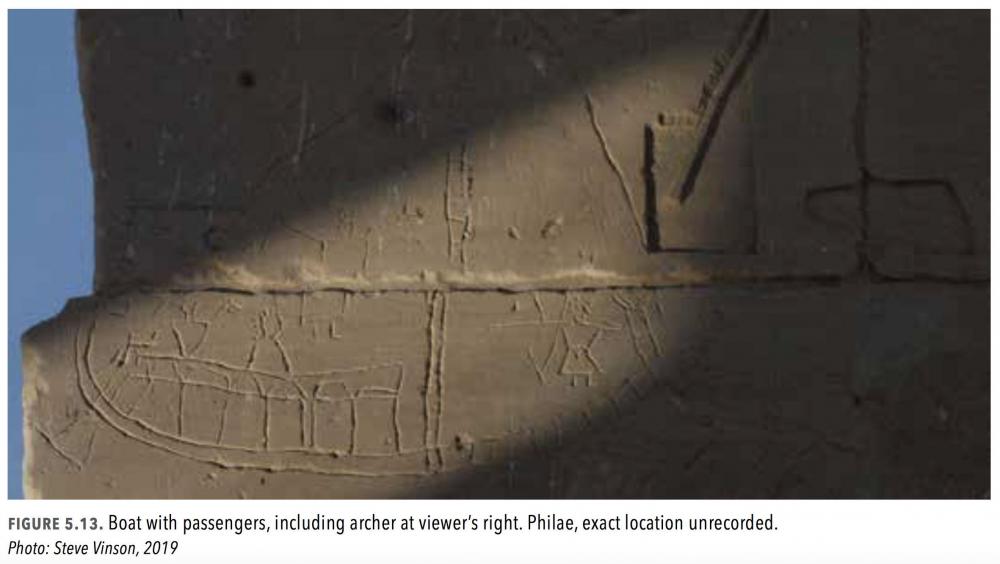
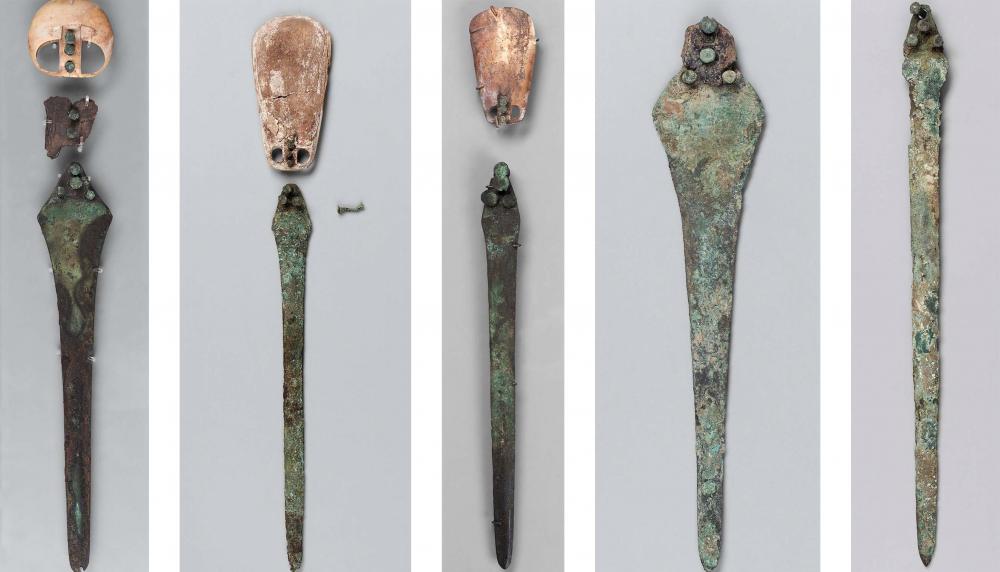
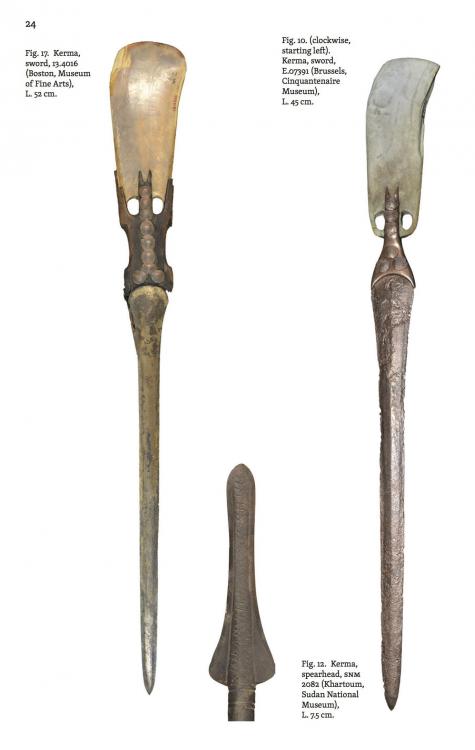

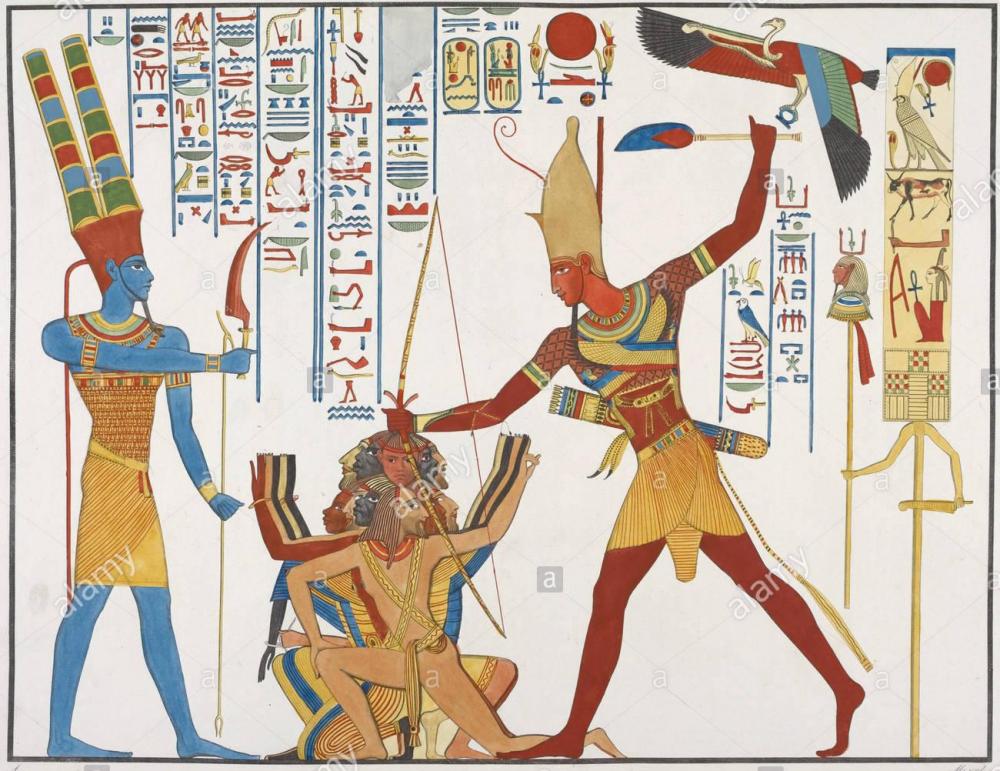
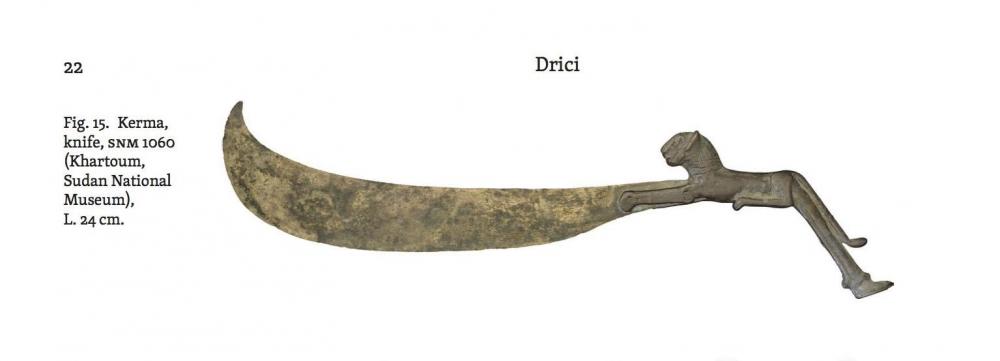
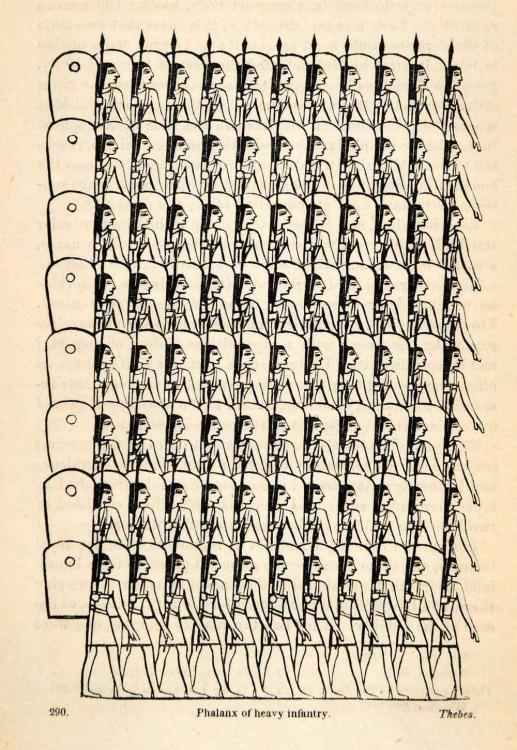
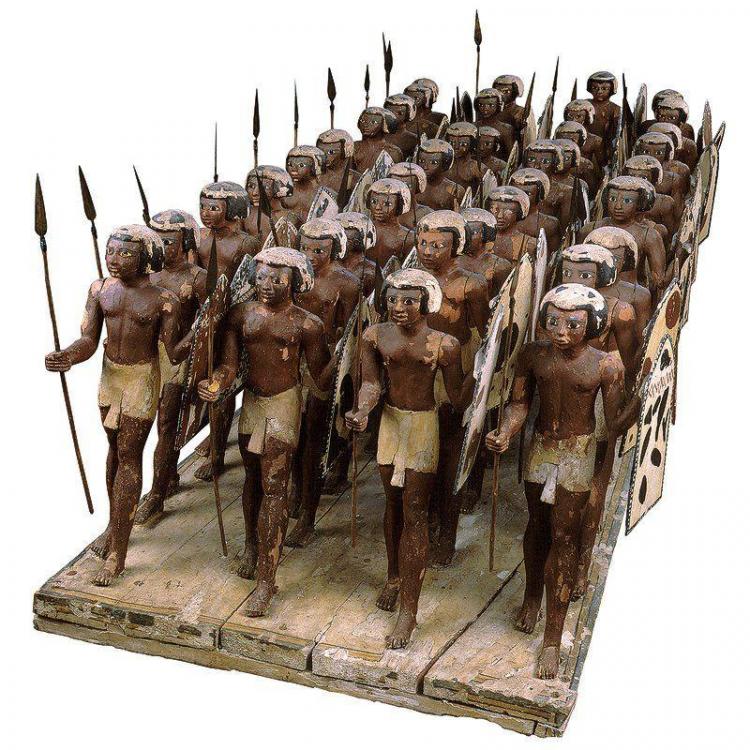
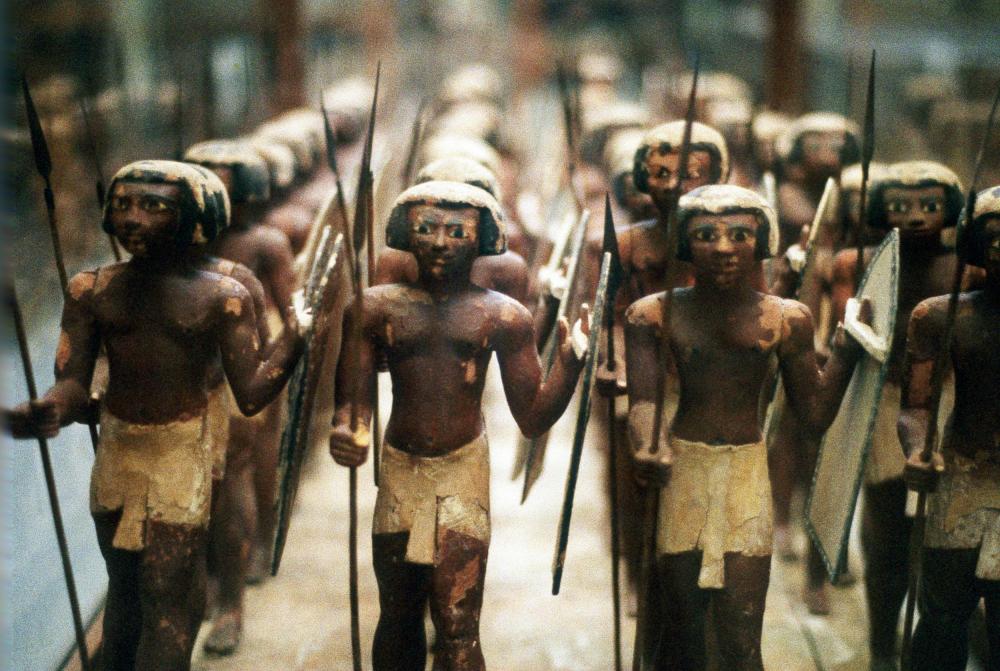
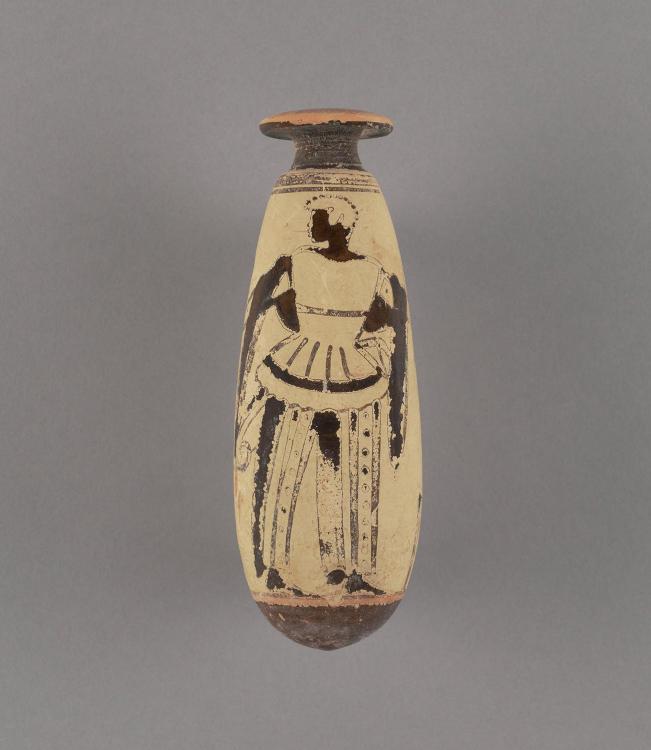
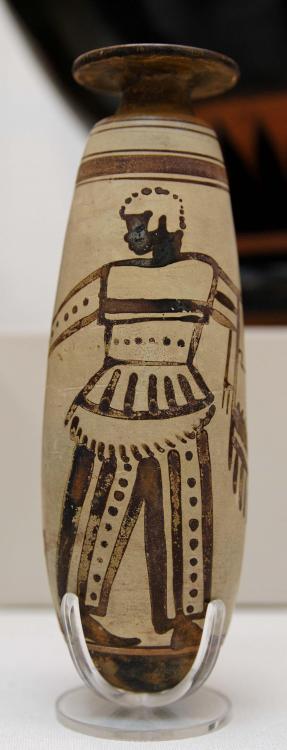
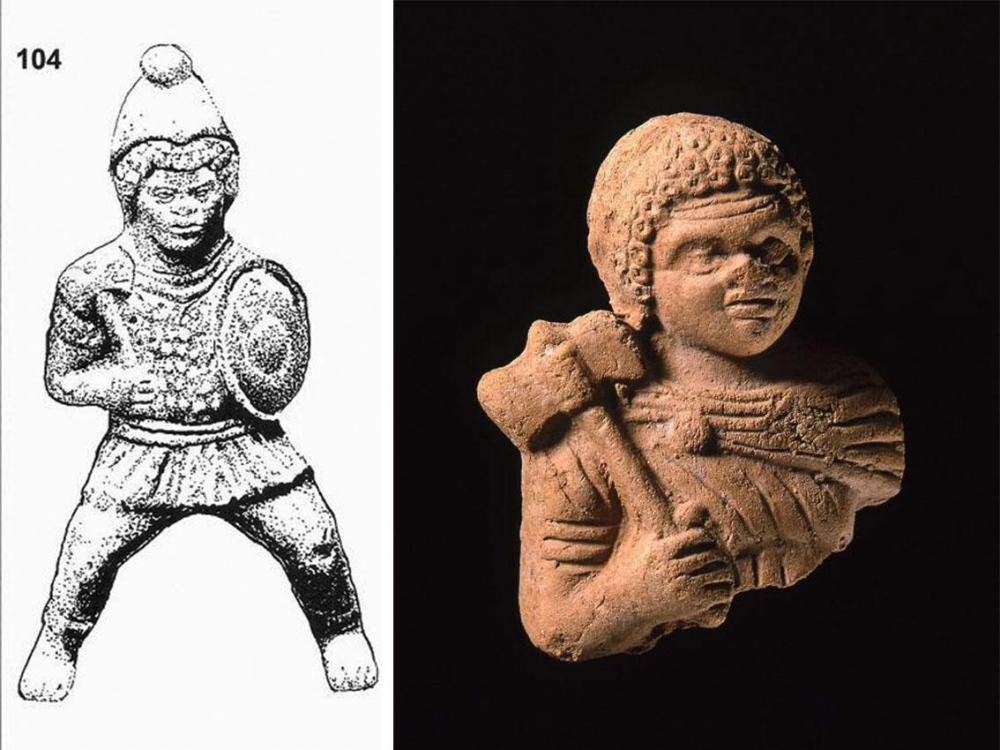

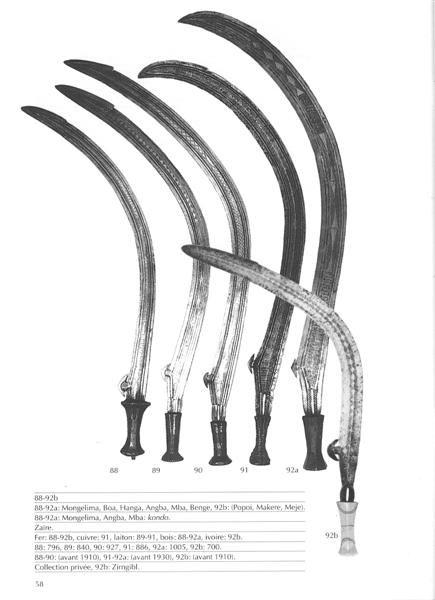
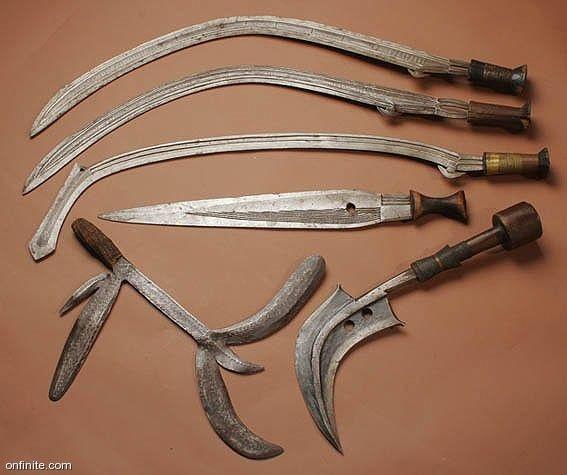
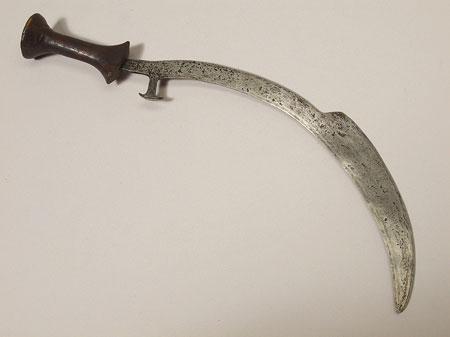
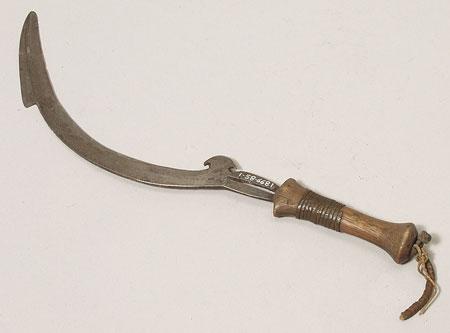
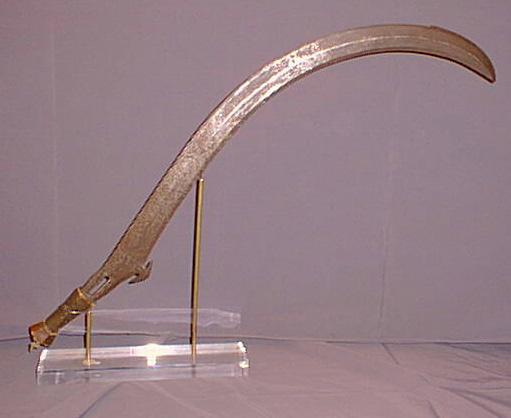
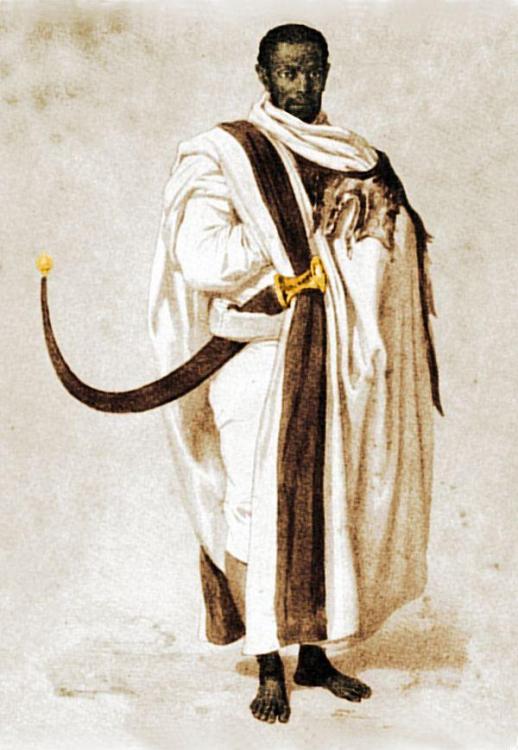
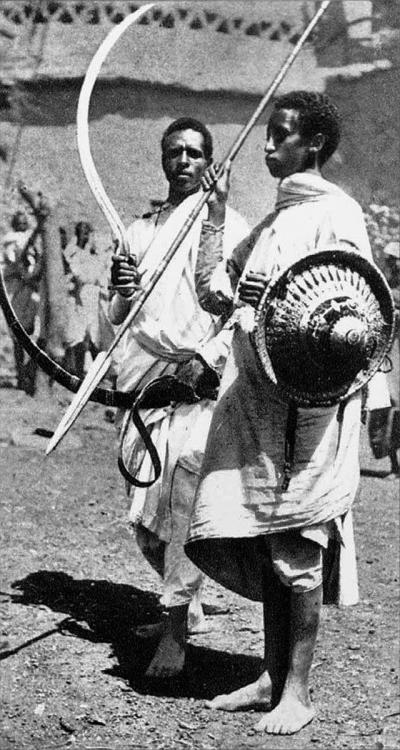
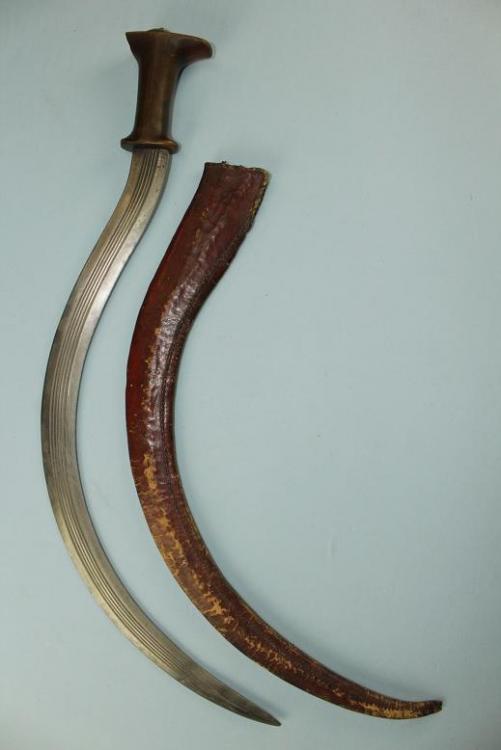
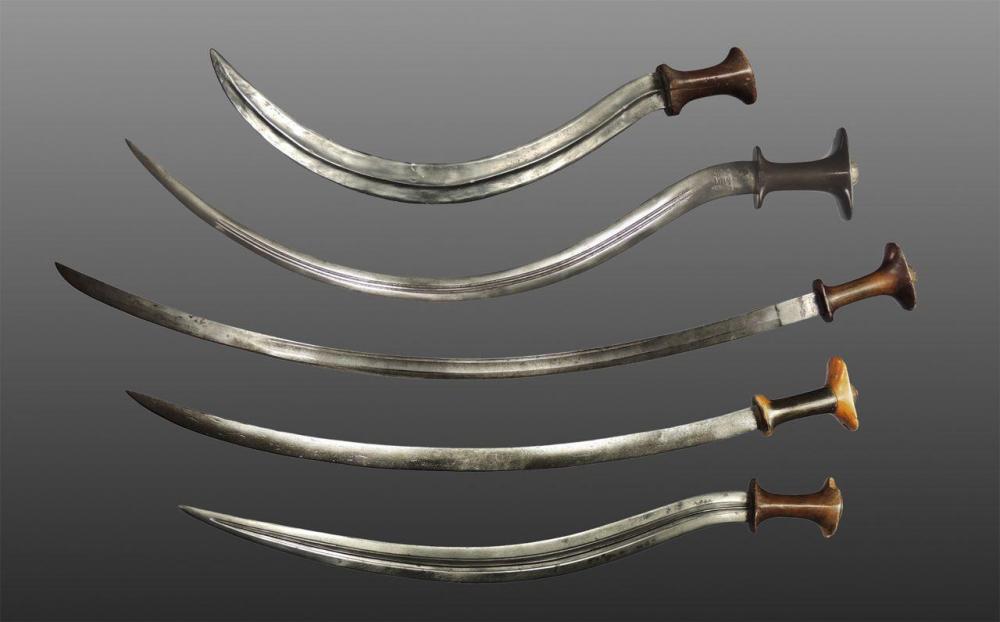
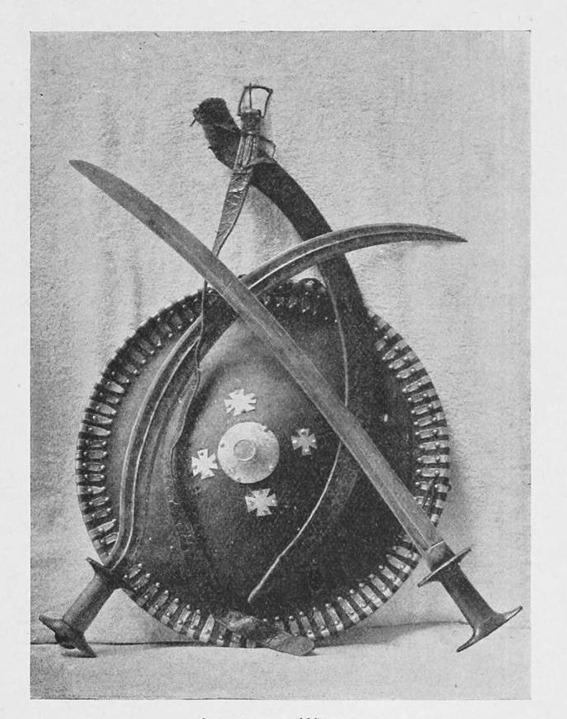
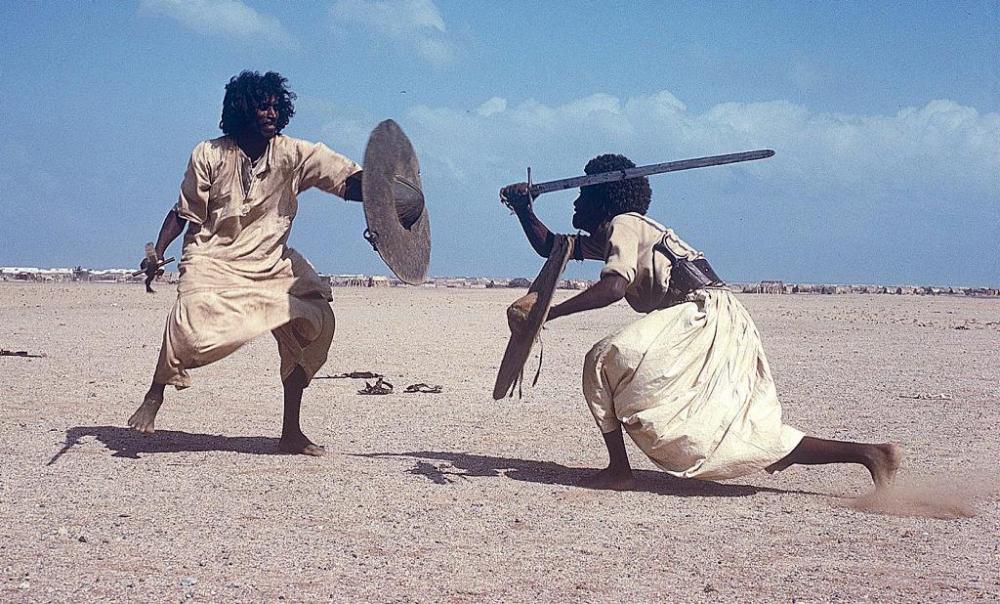
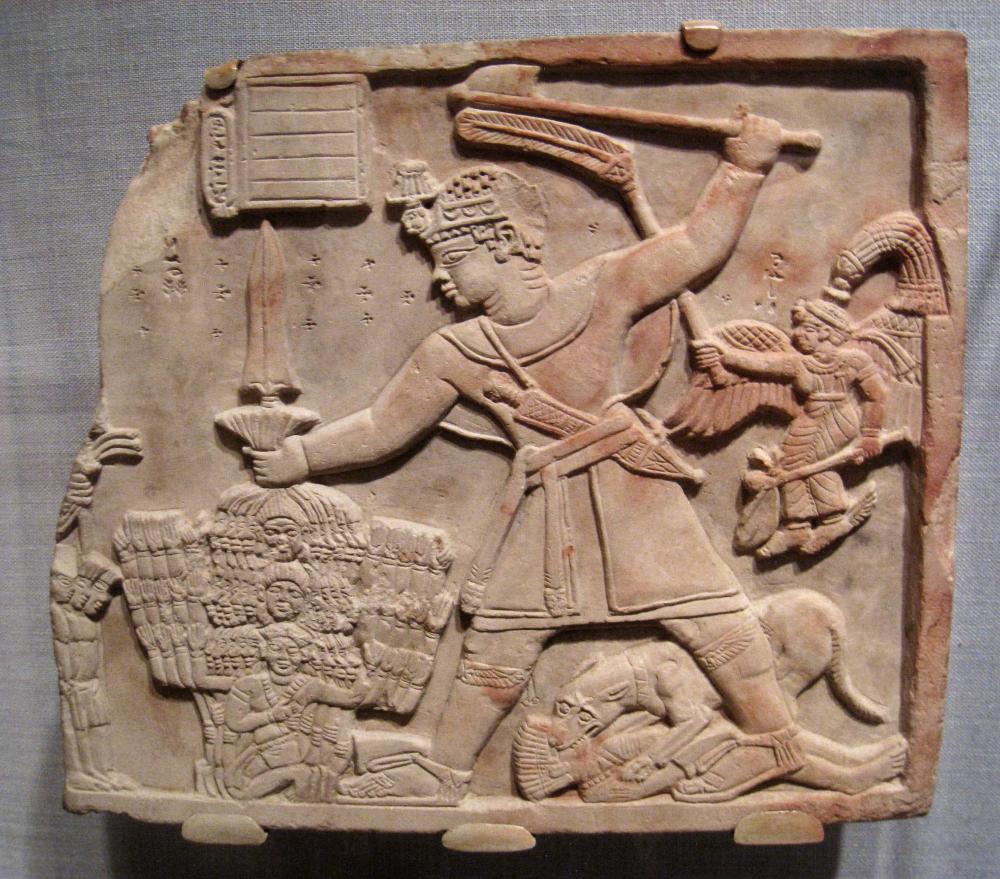
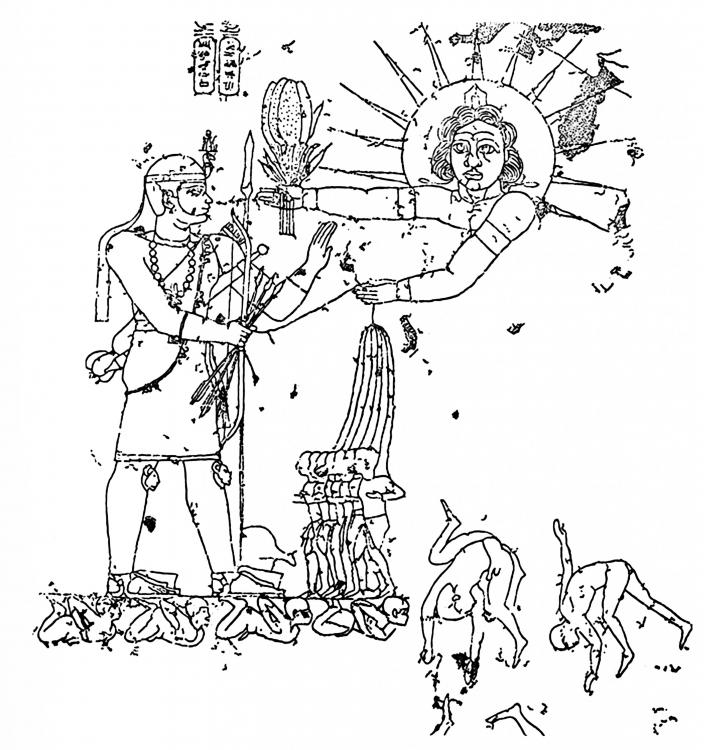
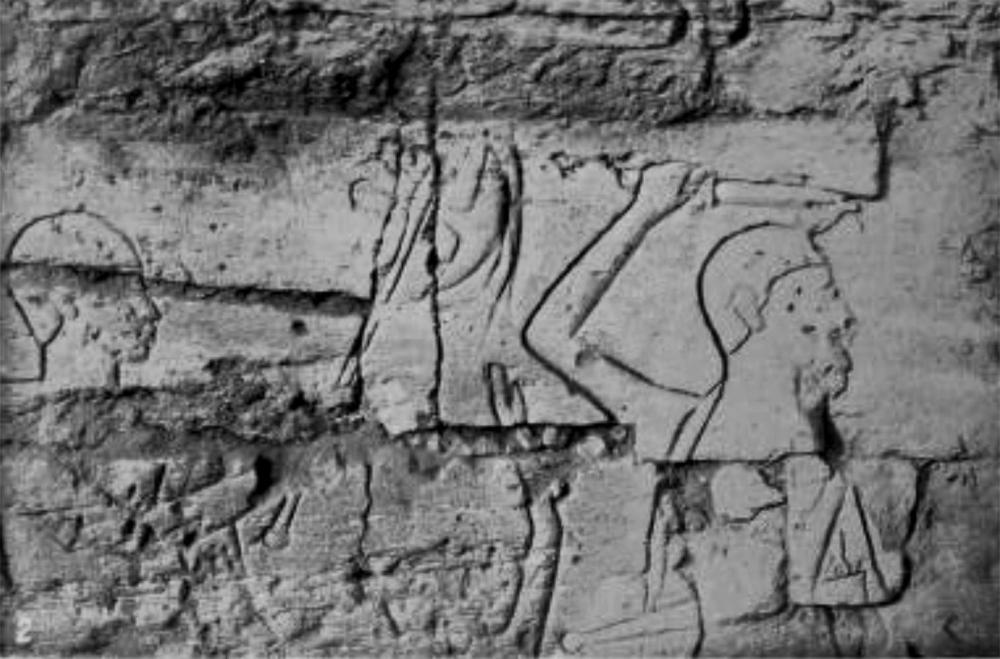
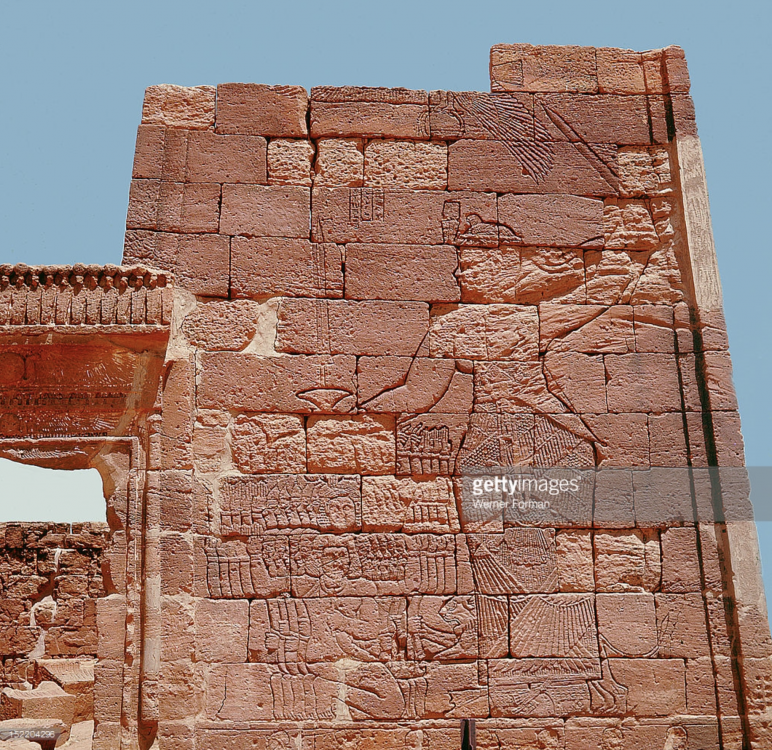

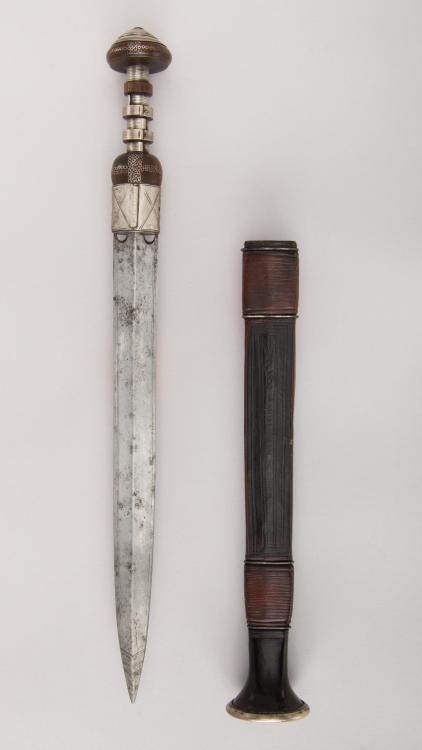
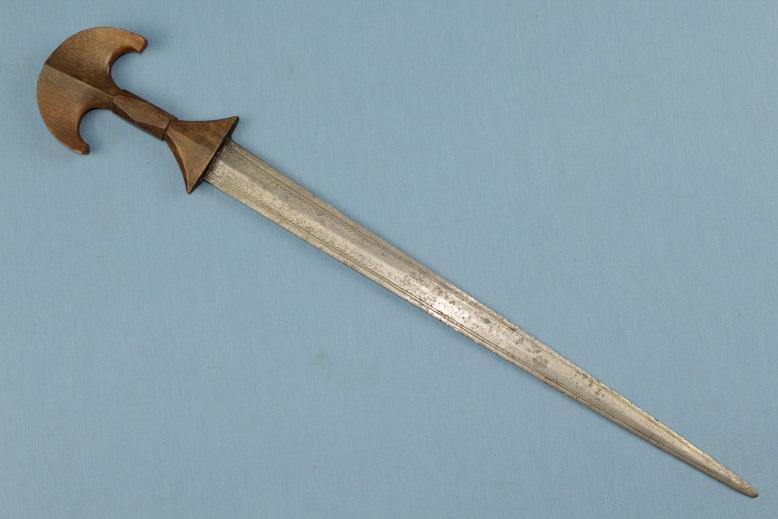
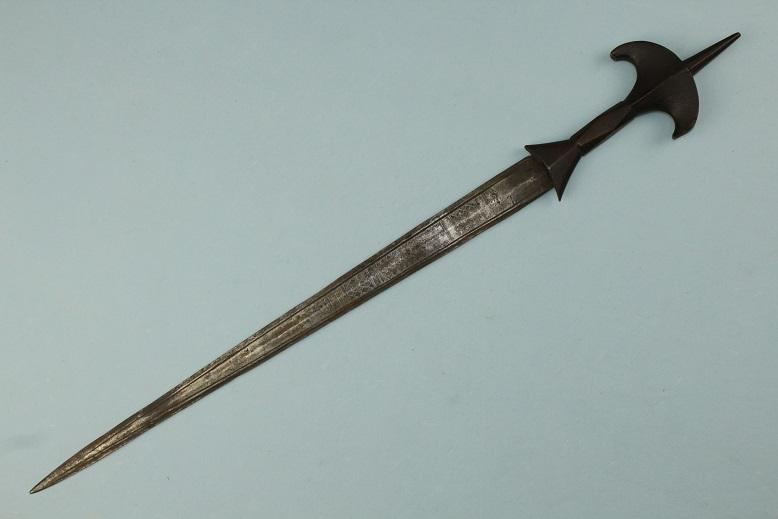
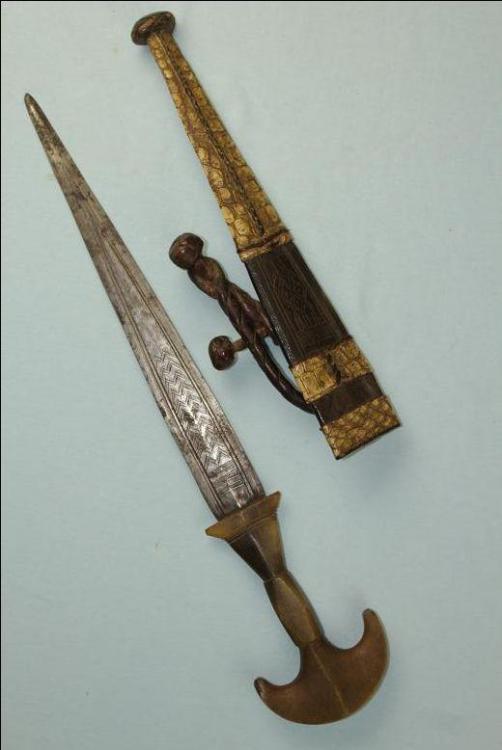

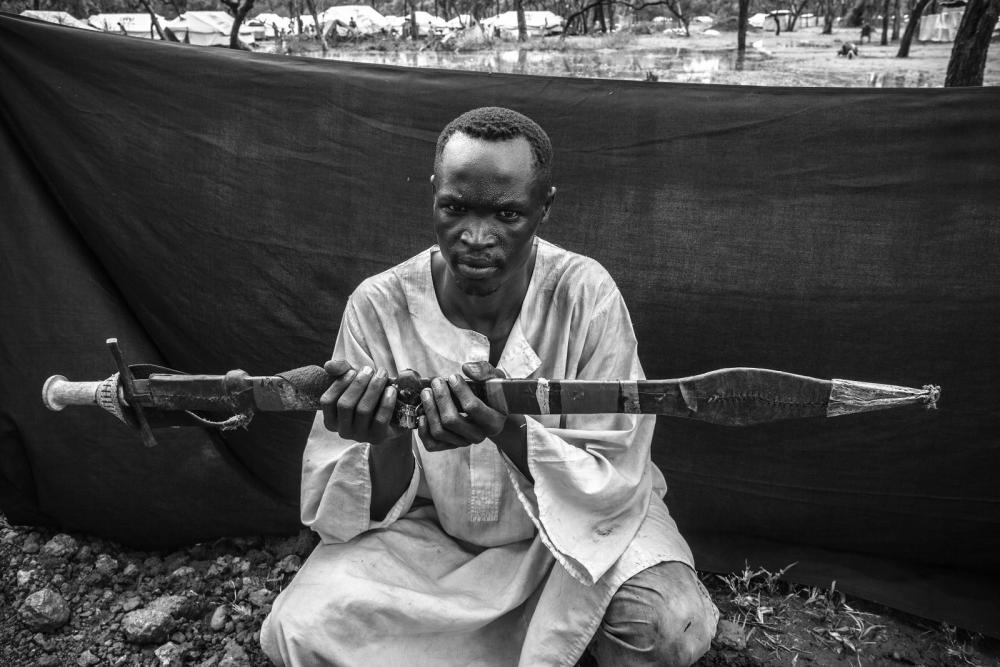
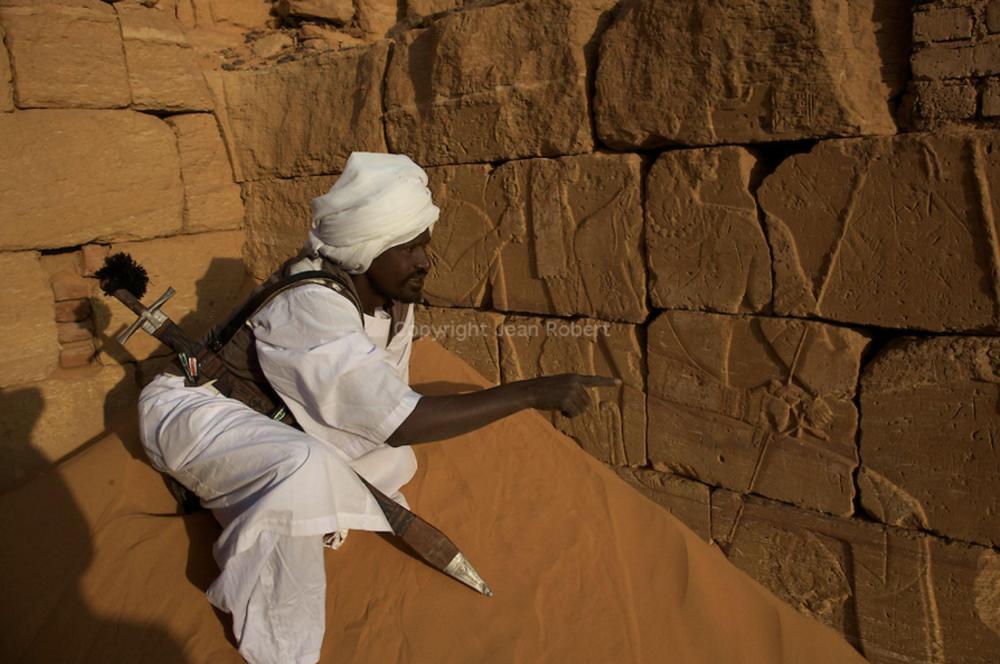
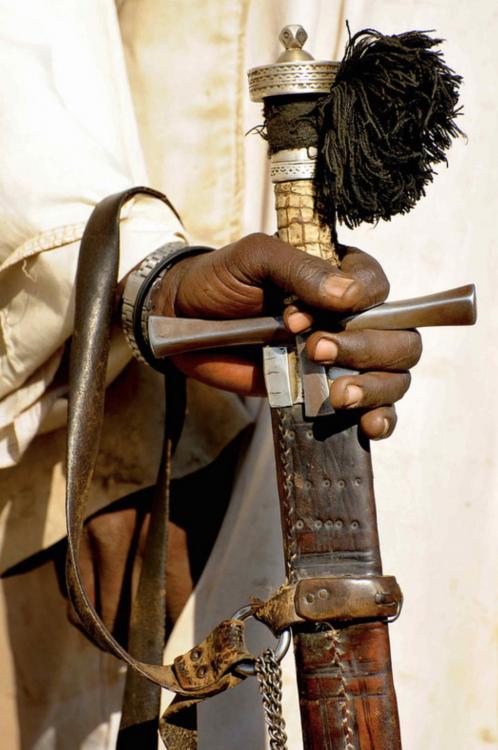
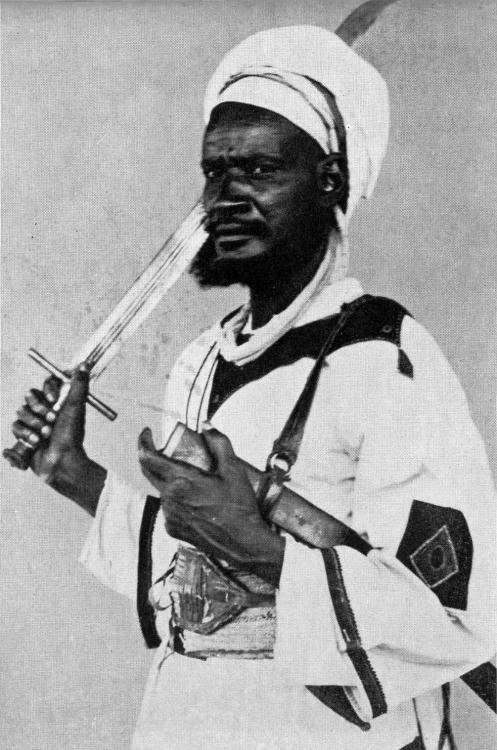
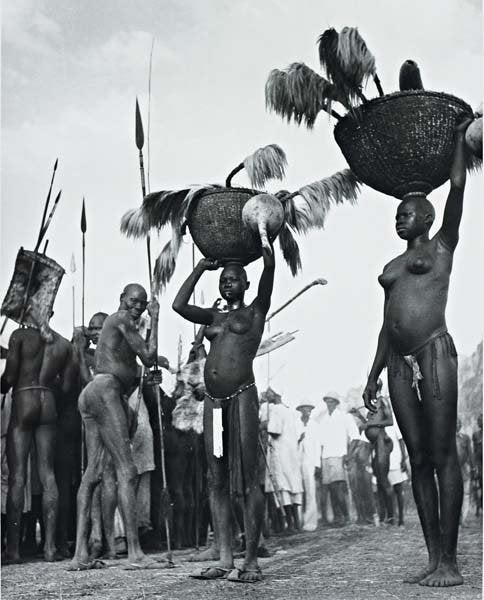
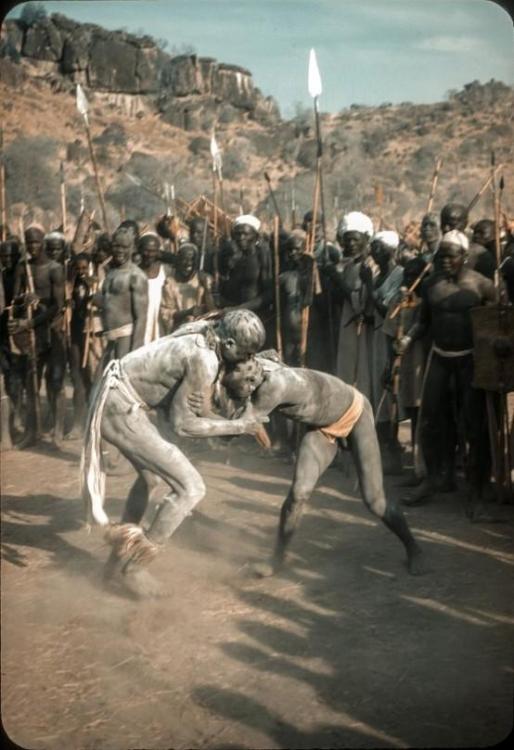
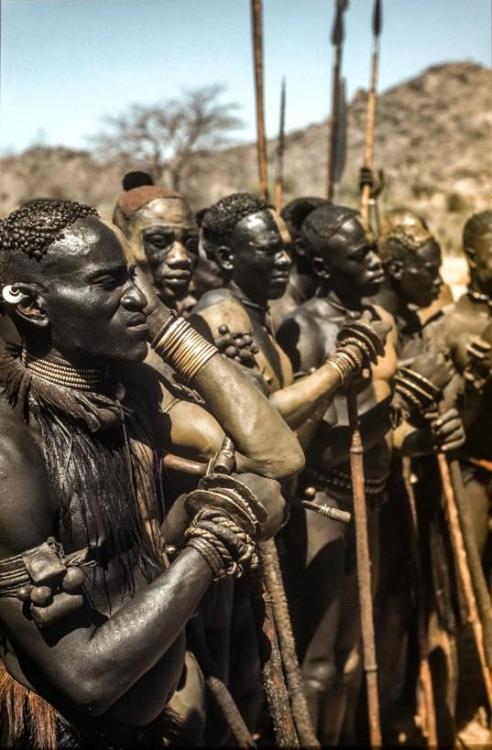
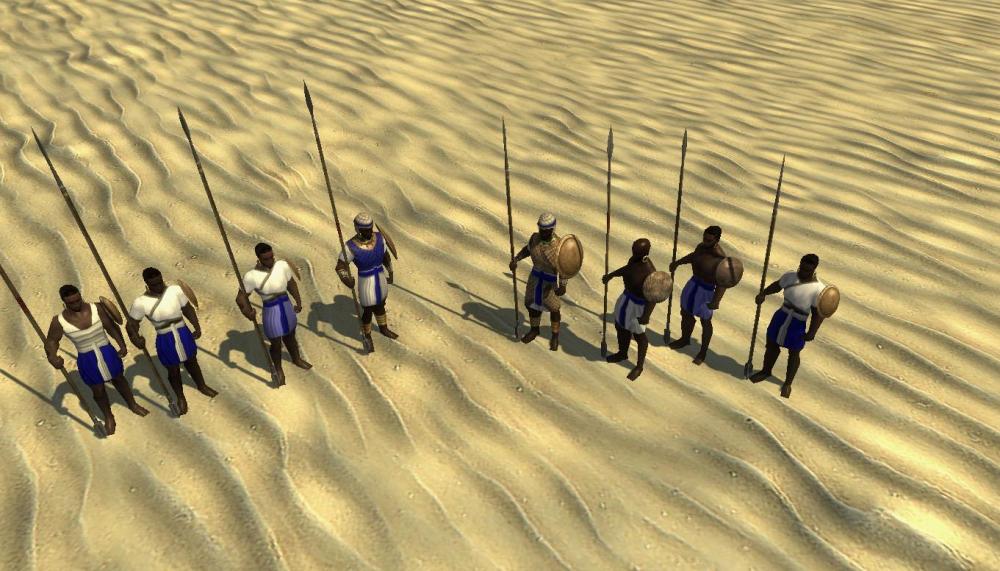
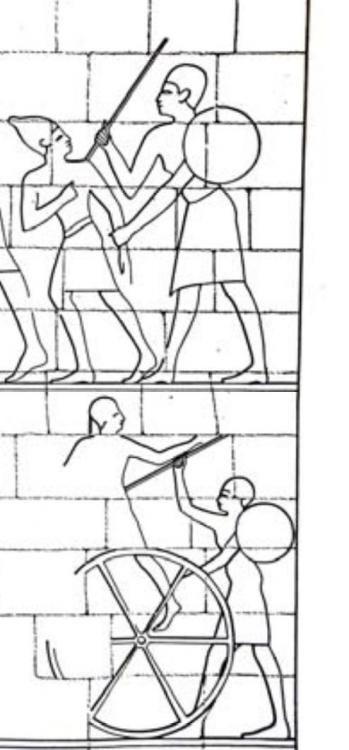
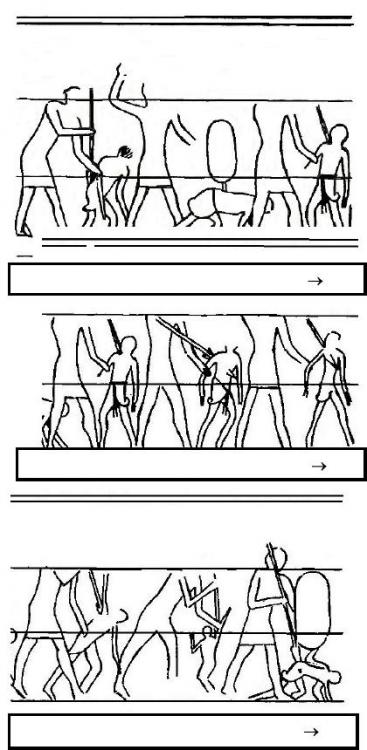
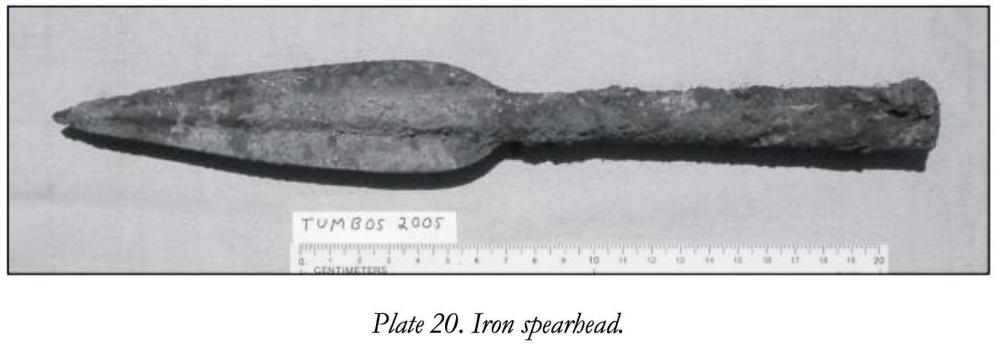
Hi! (multiple profiles artist)
in Introductions & Off-Topic Discussion
Posted
Unless something changed, isn't it very important to mention that the images need to tile? It was a big headache for Pedro when he was making his background, because his piece wasn't originally intended to tile. (though I still don't understand why this is made to be like that, as long as the image is long enough on the horizontal axis).